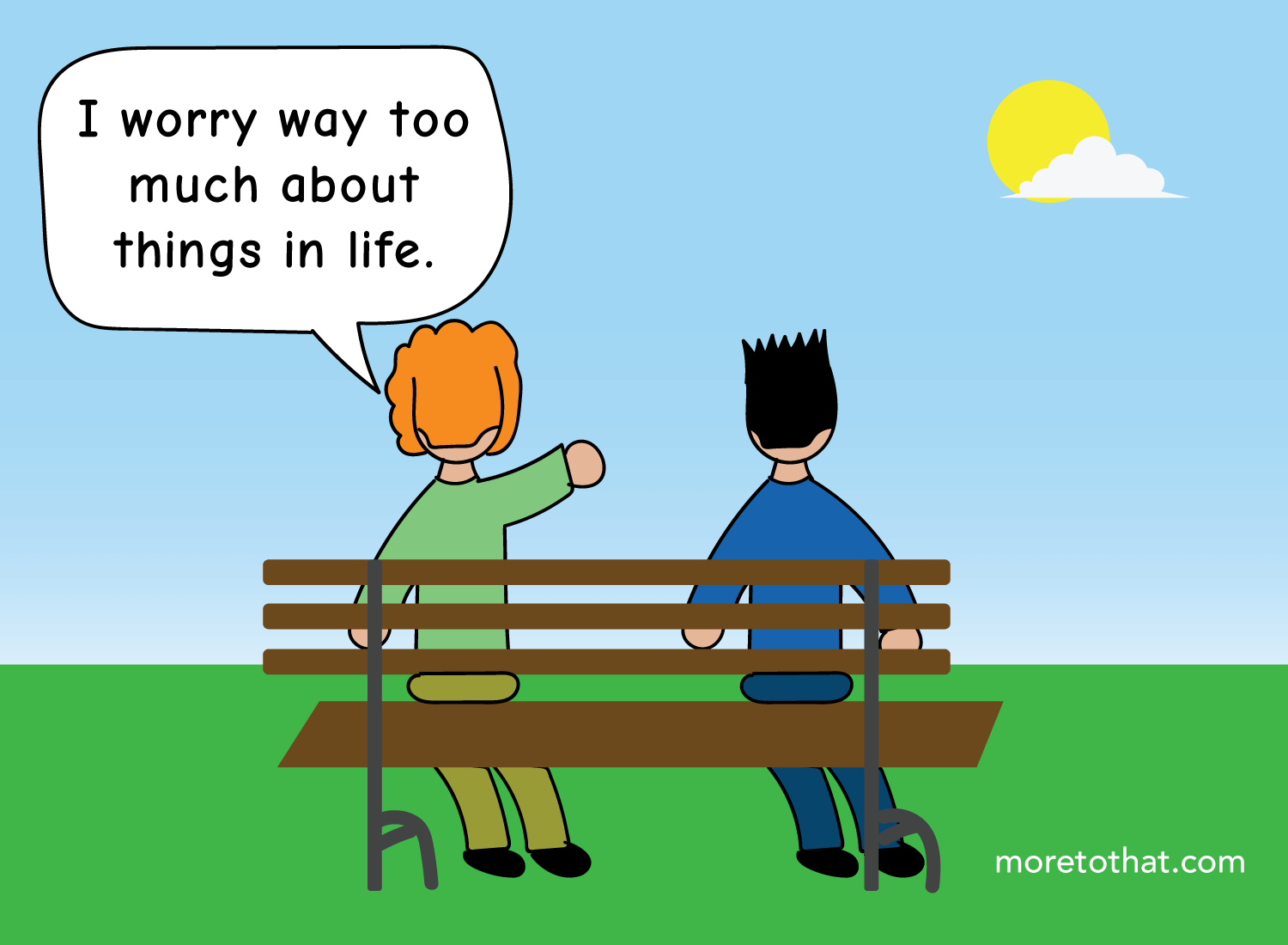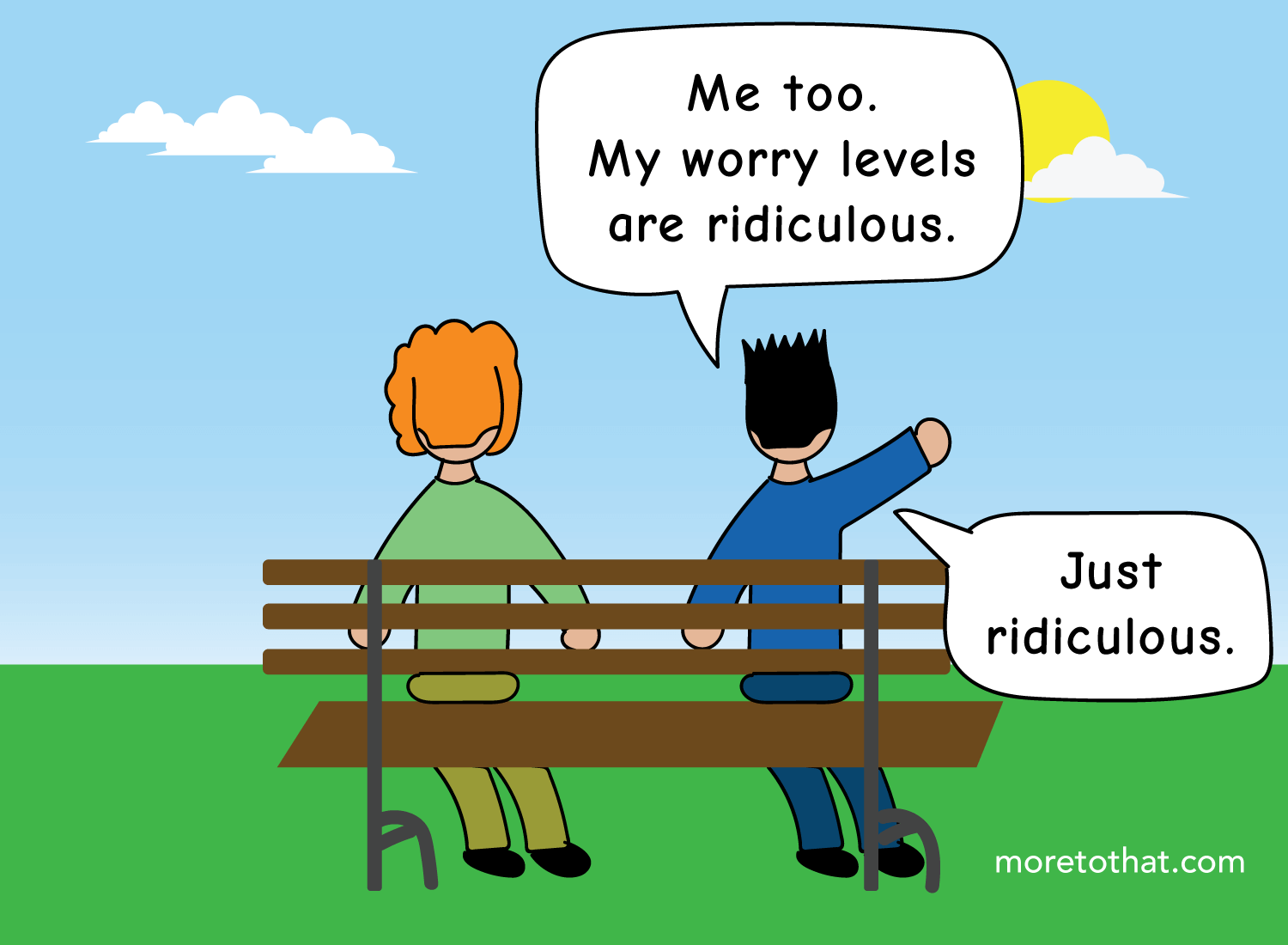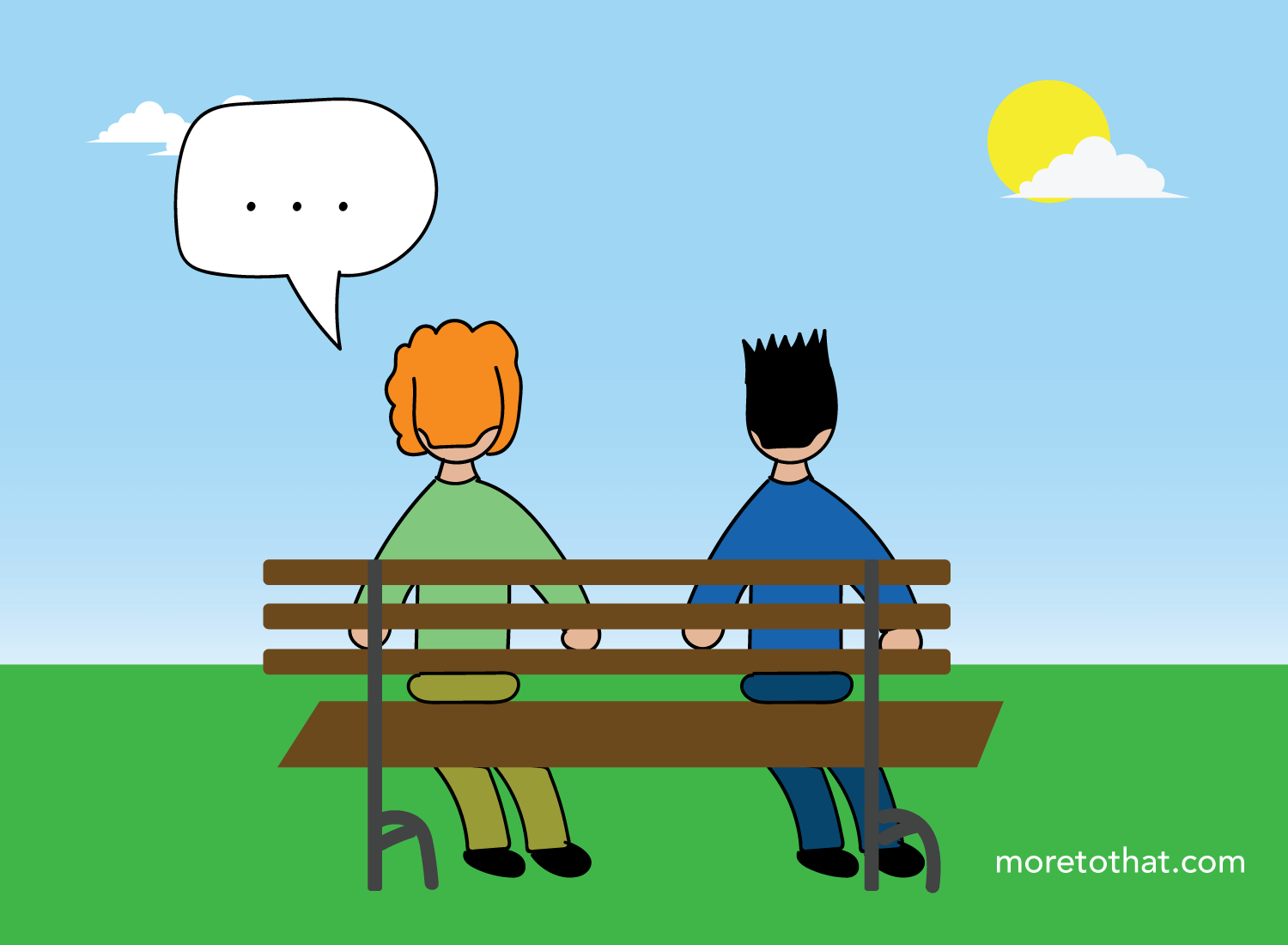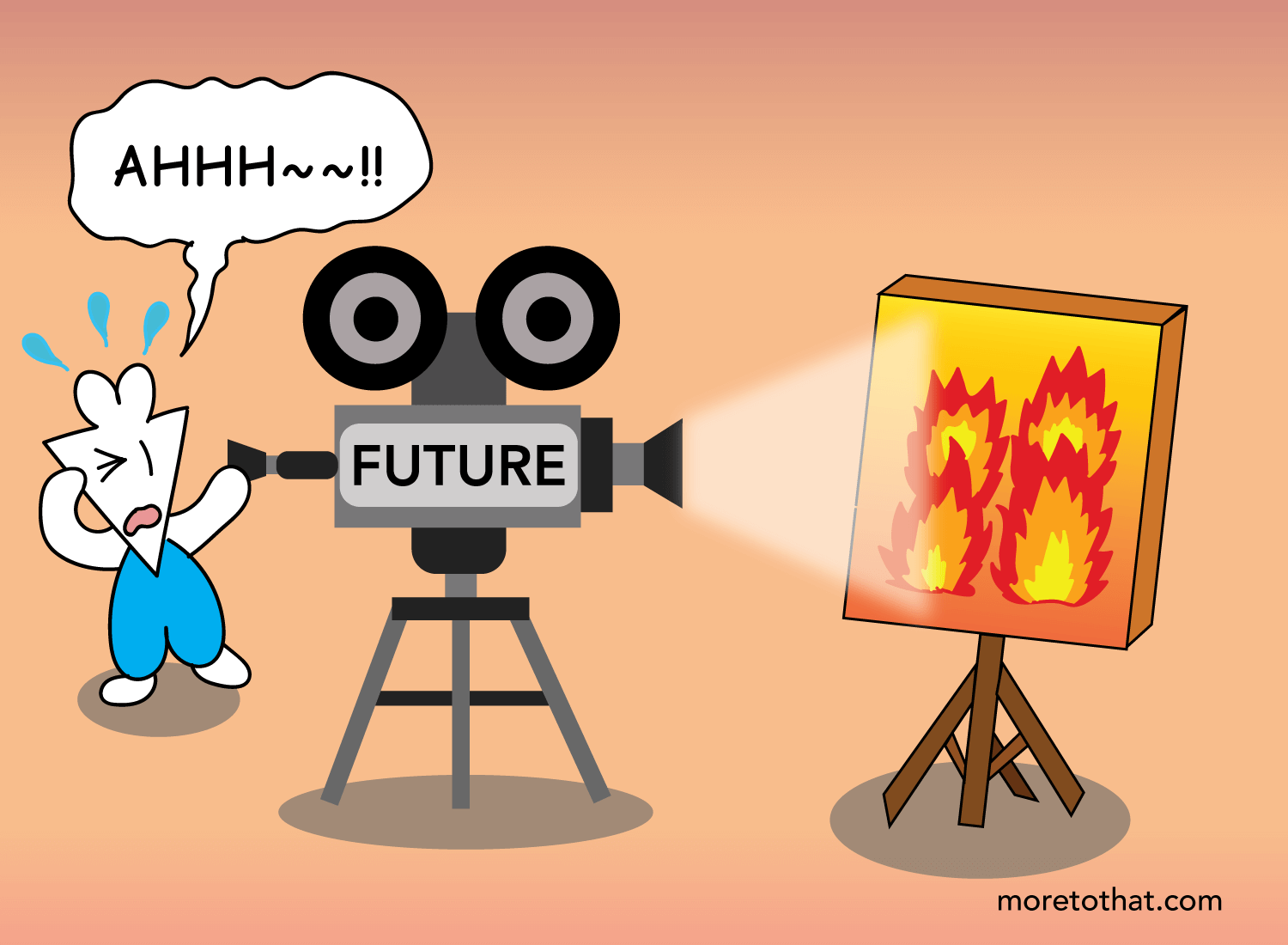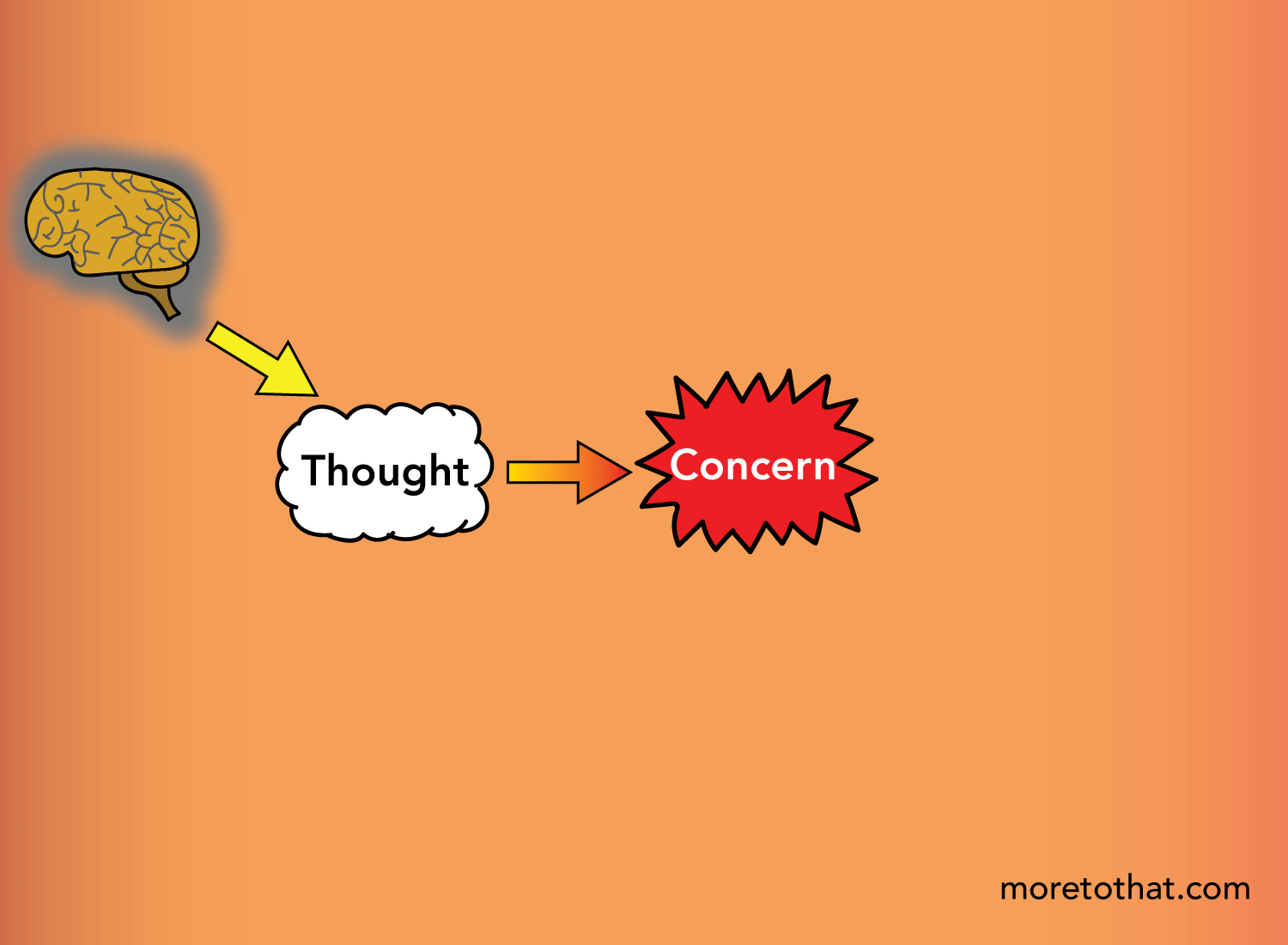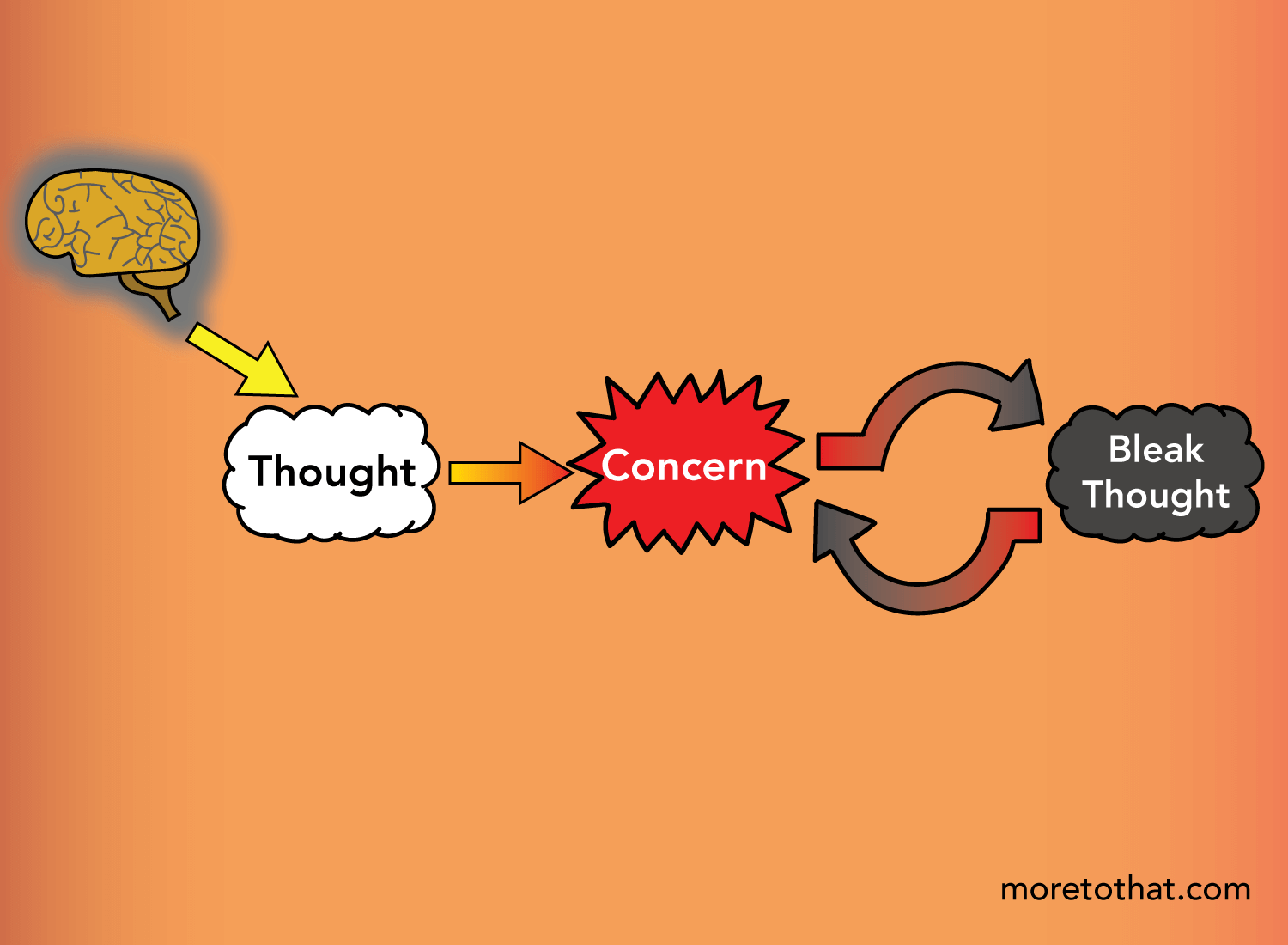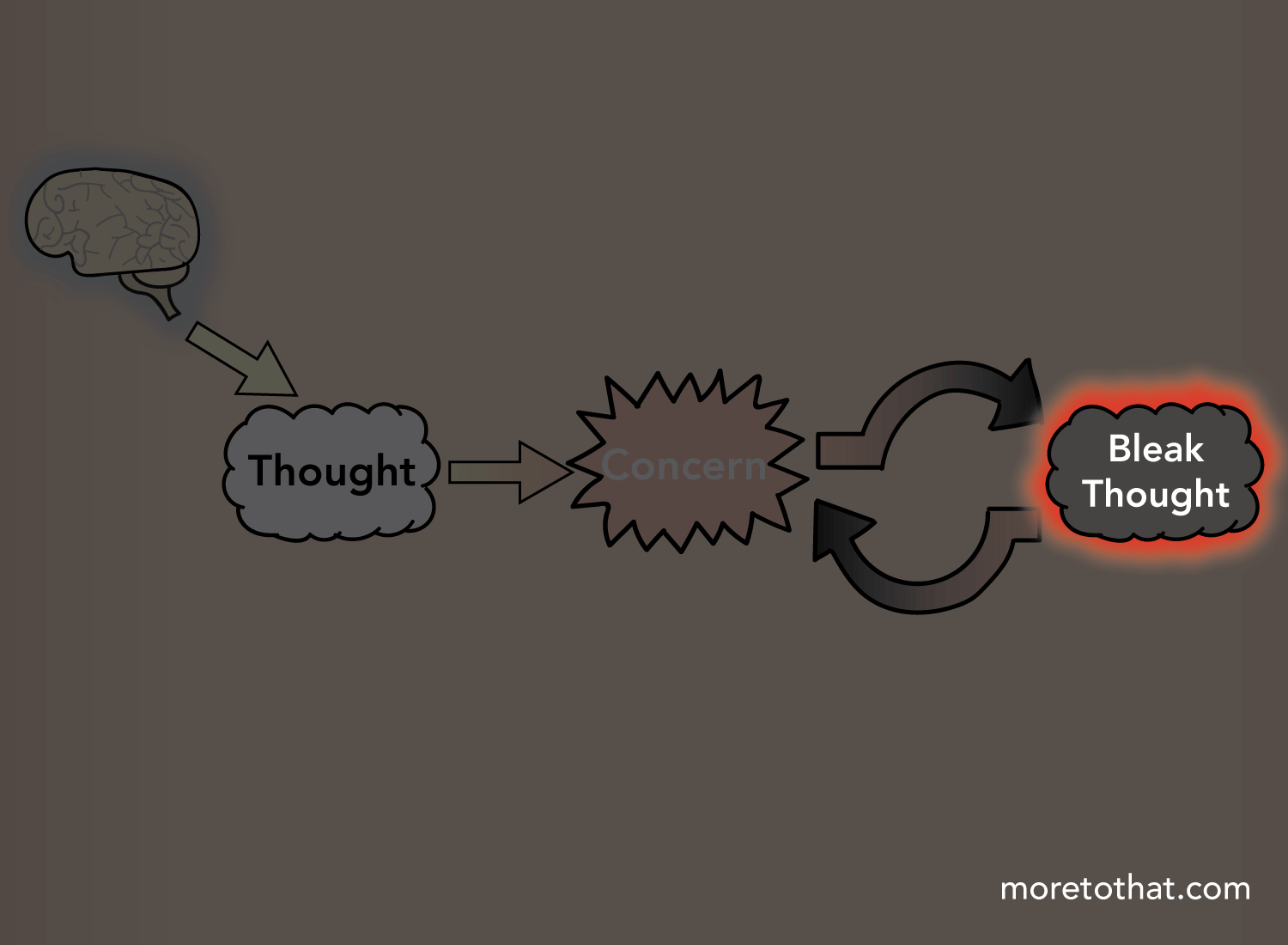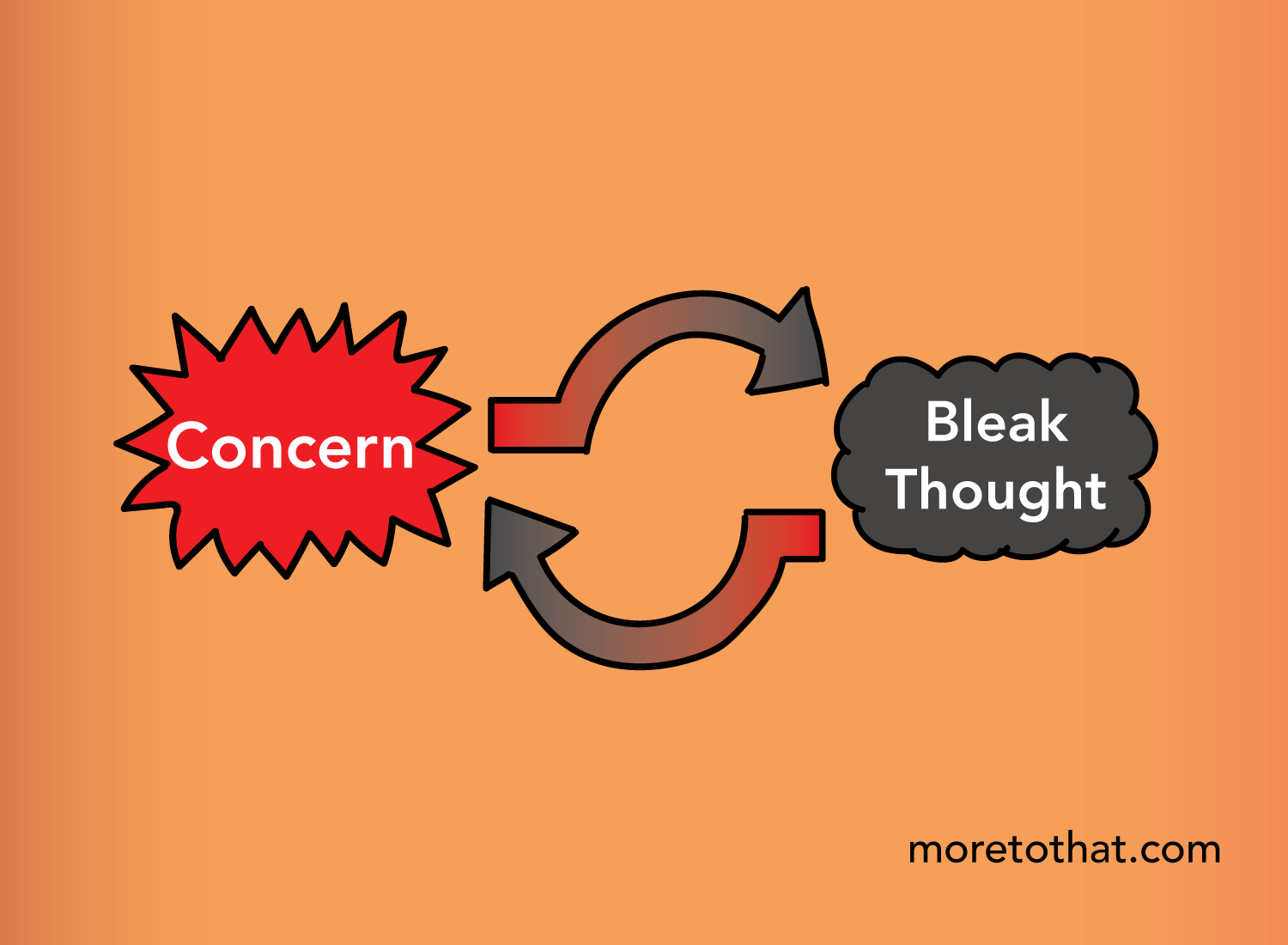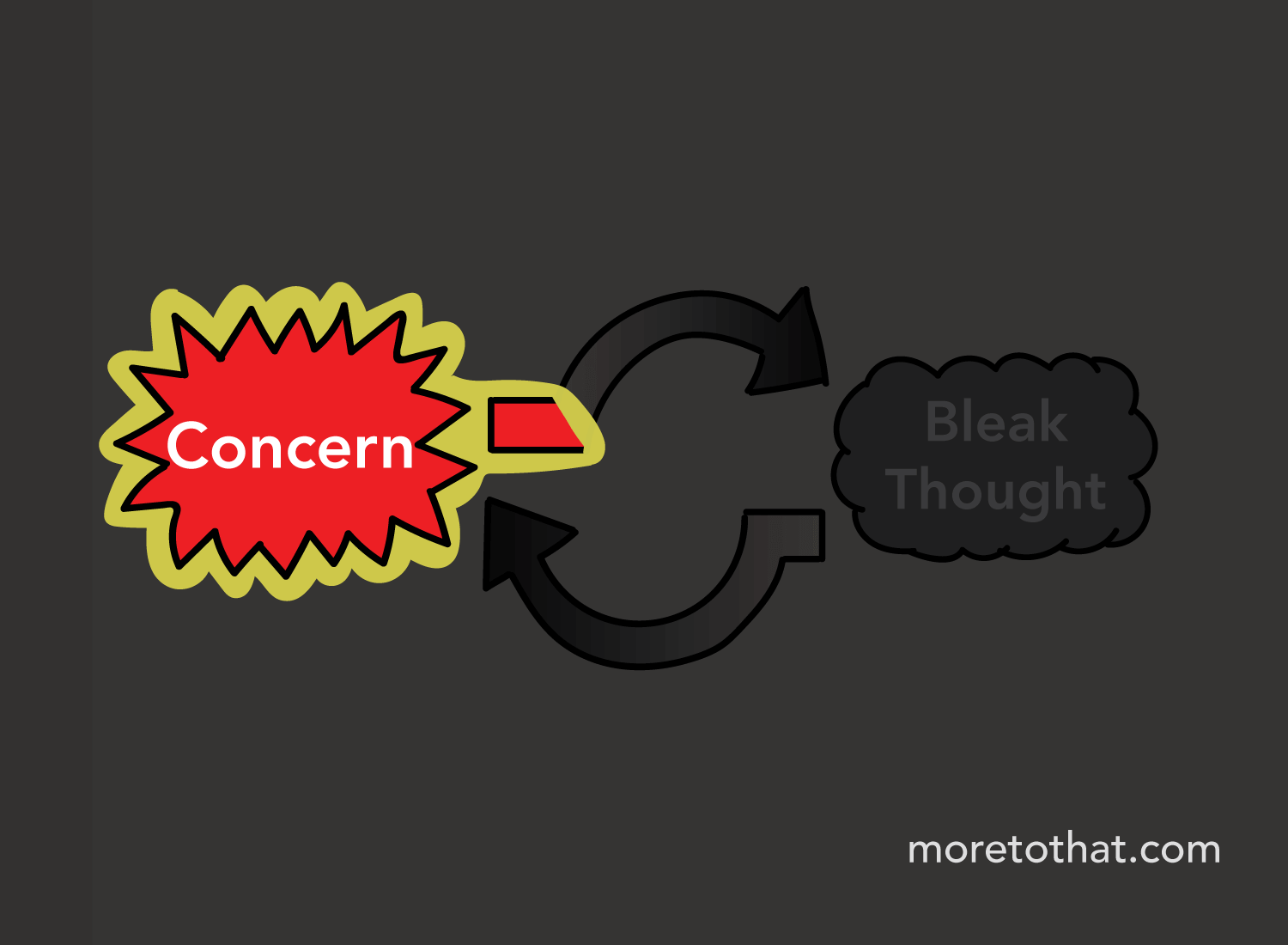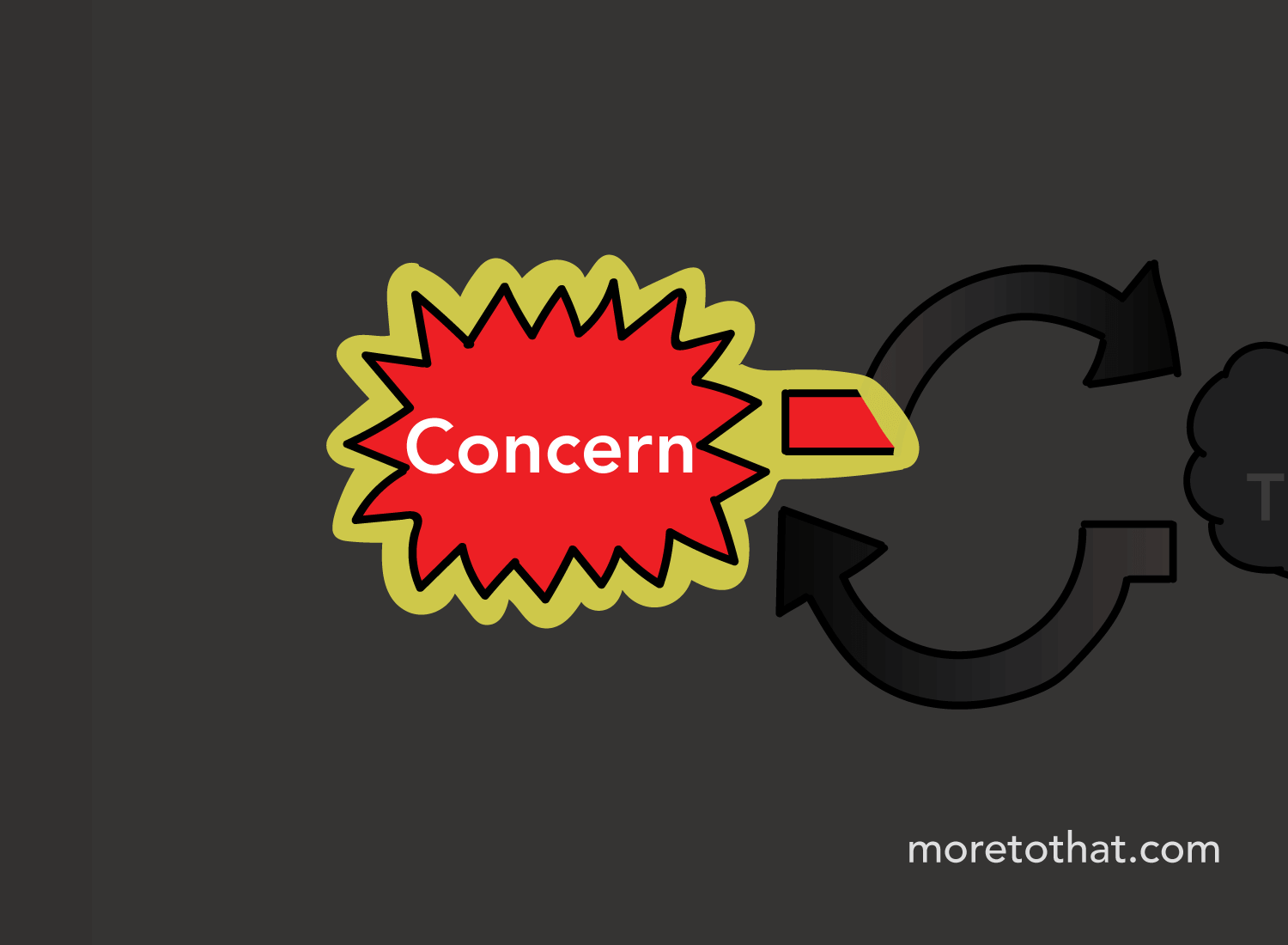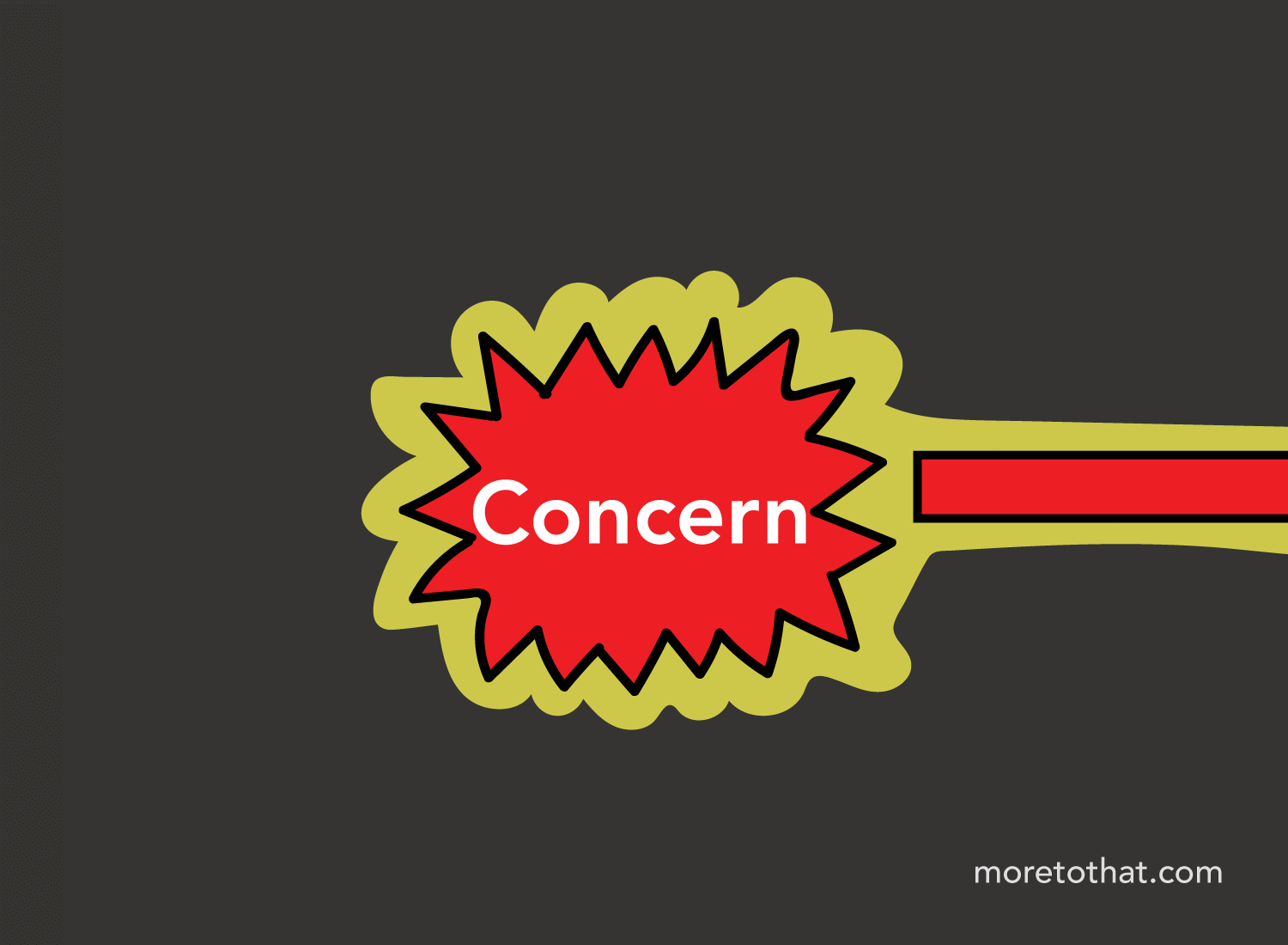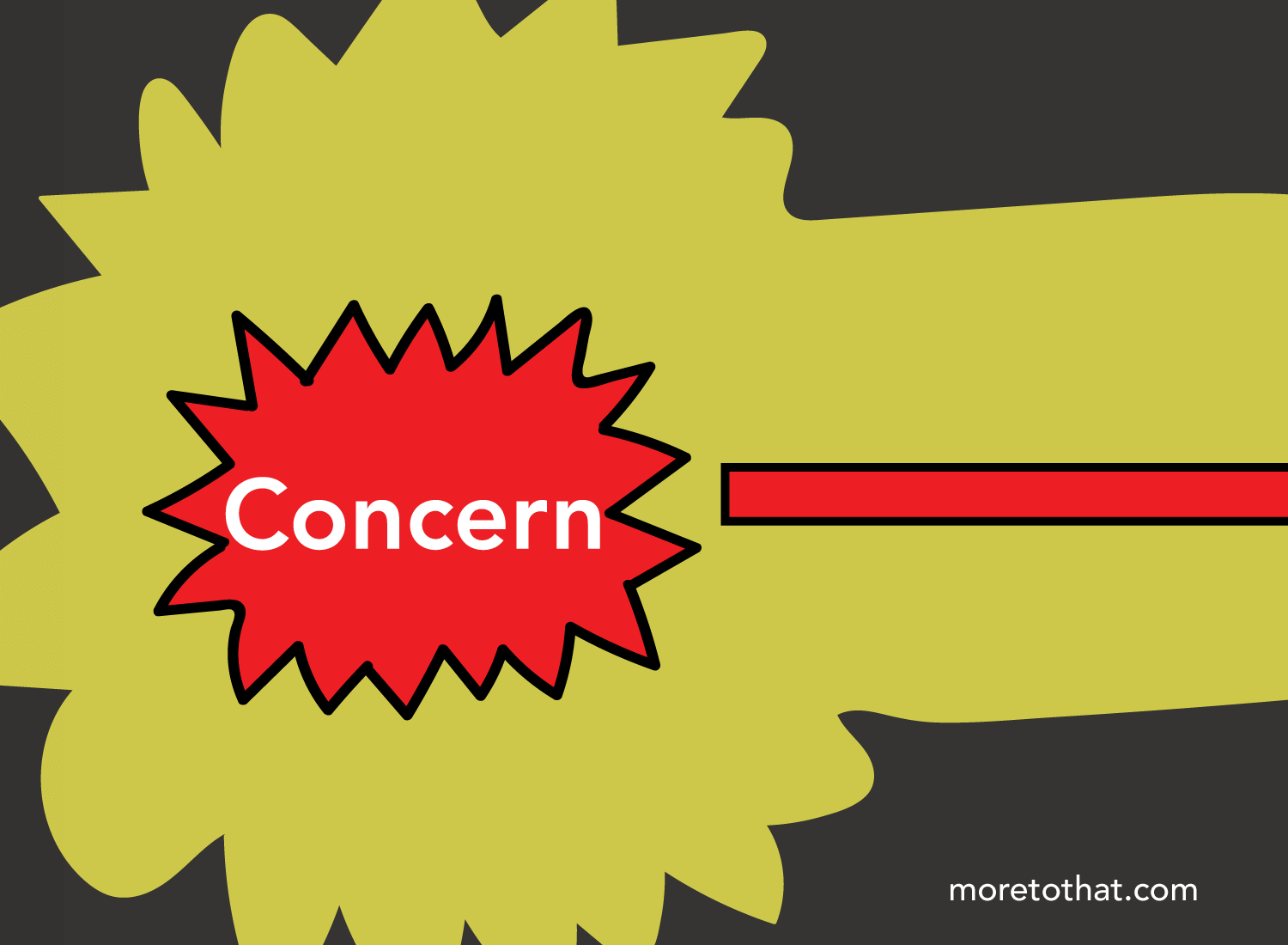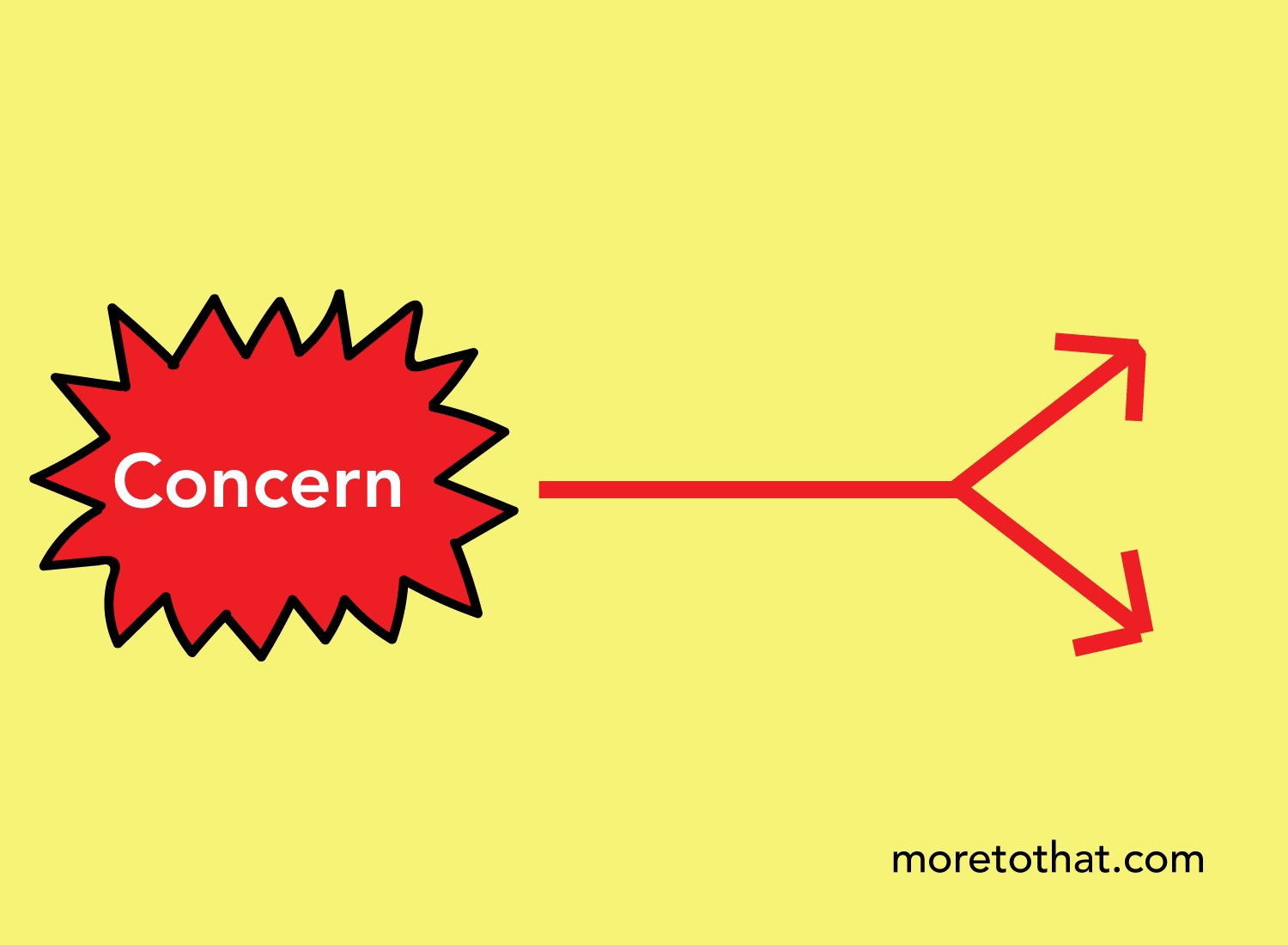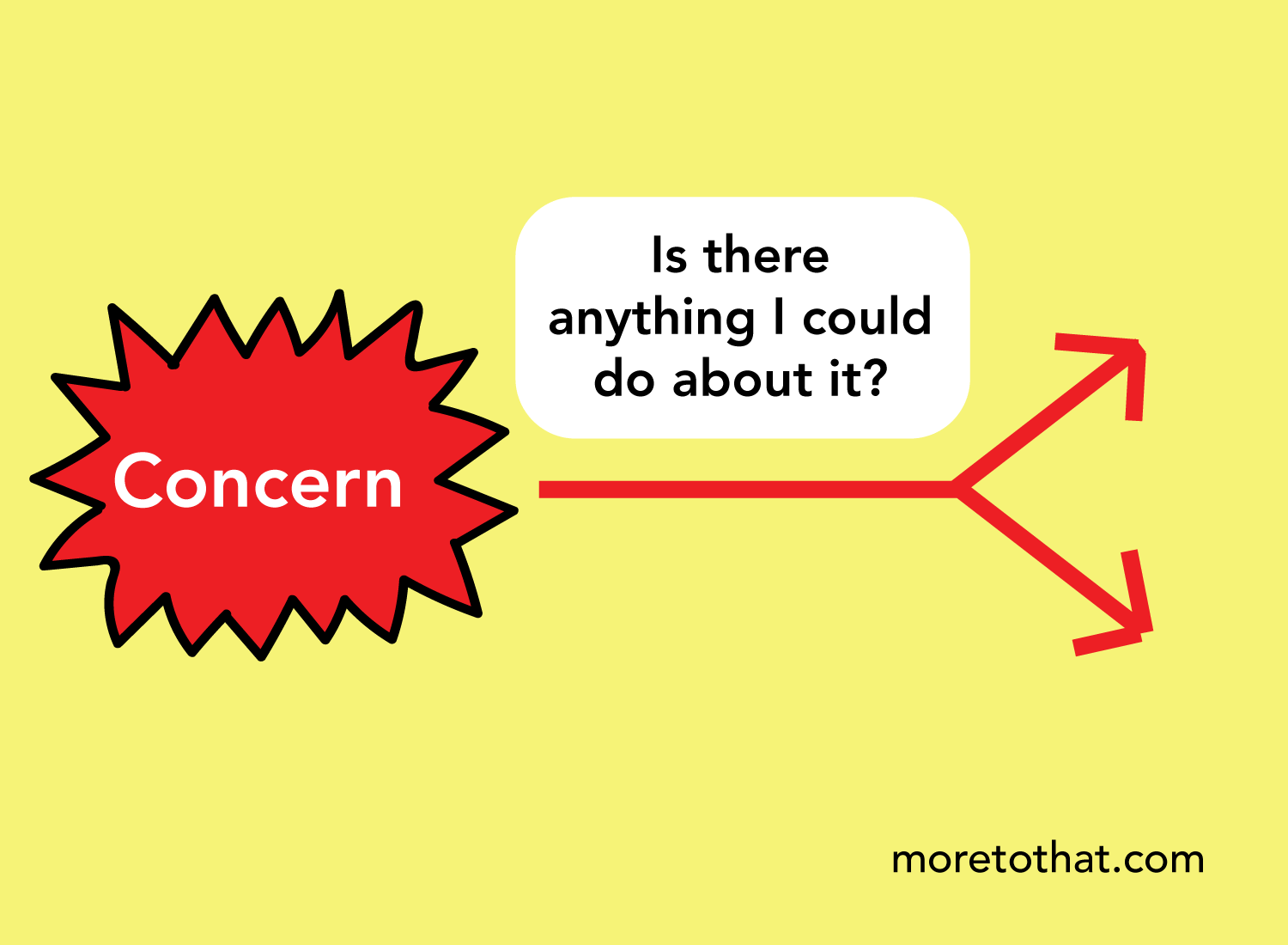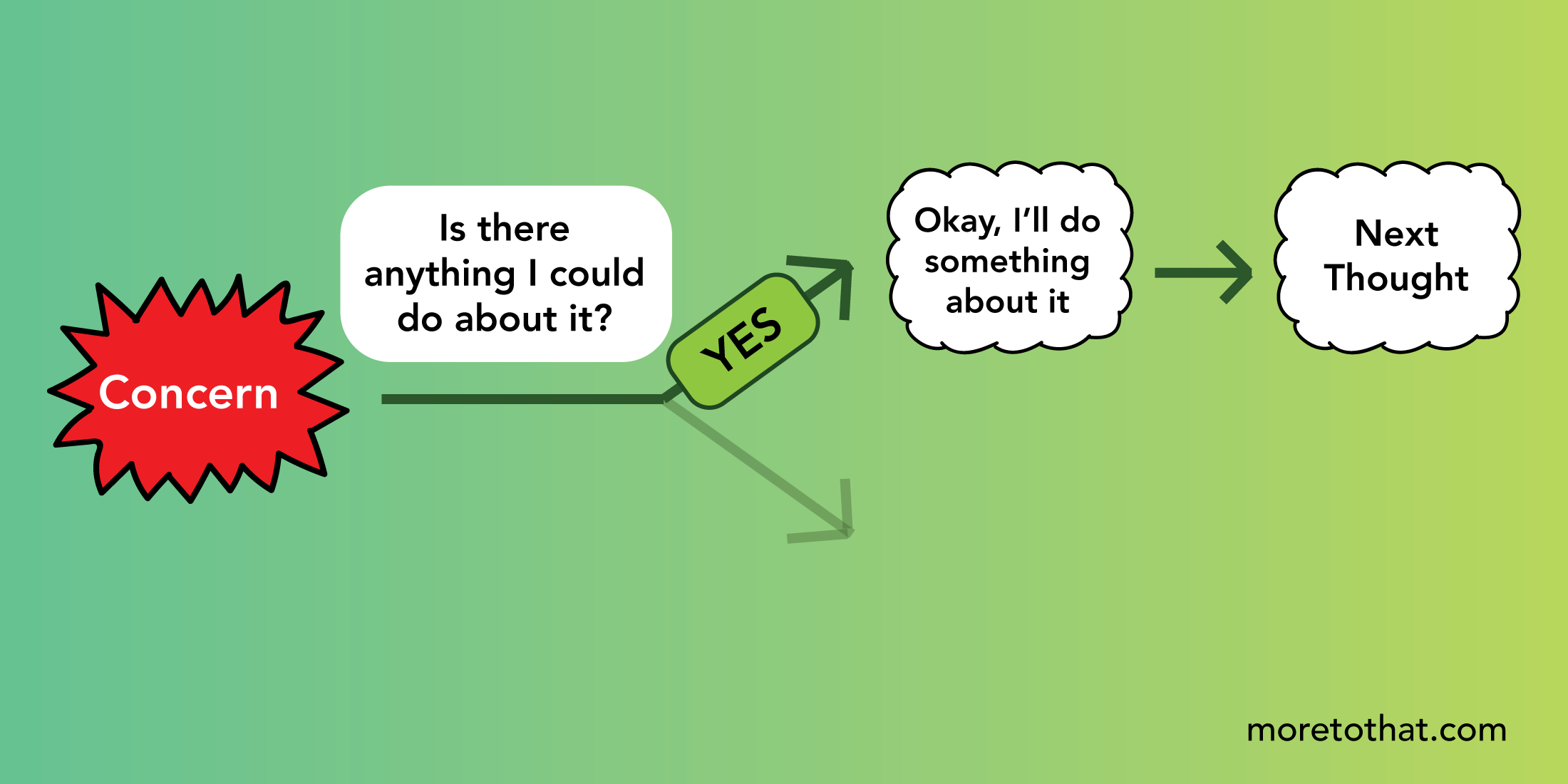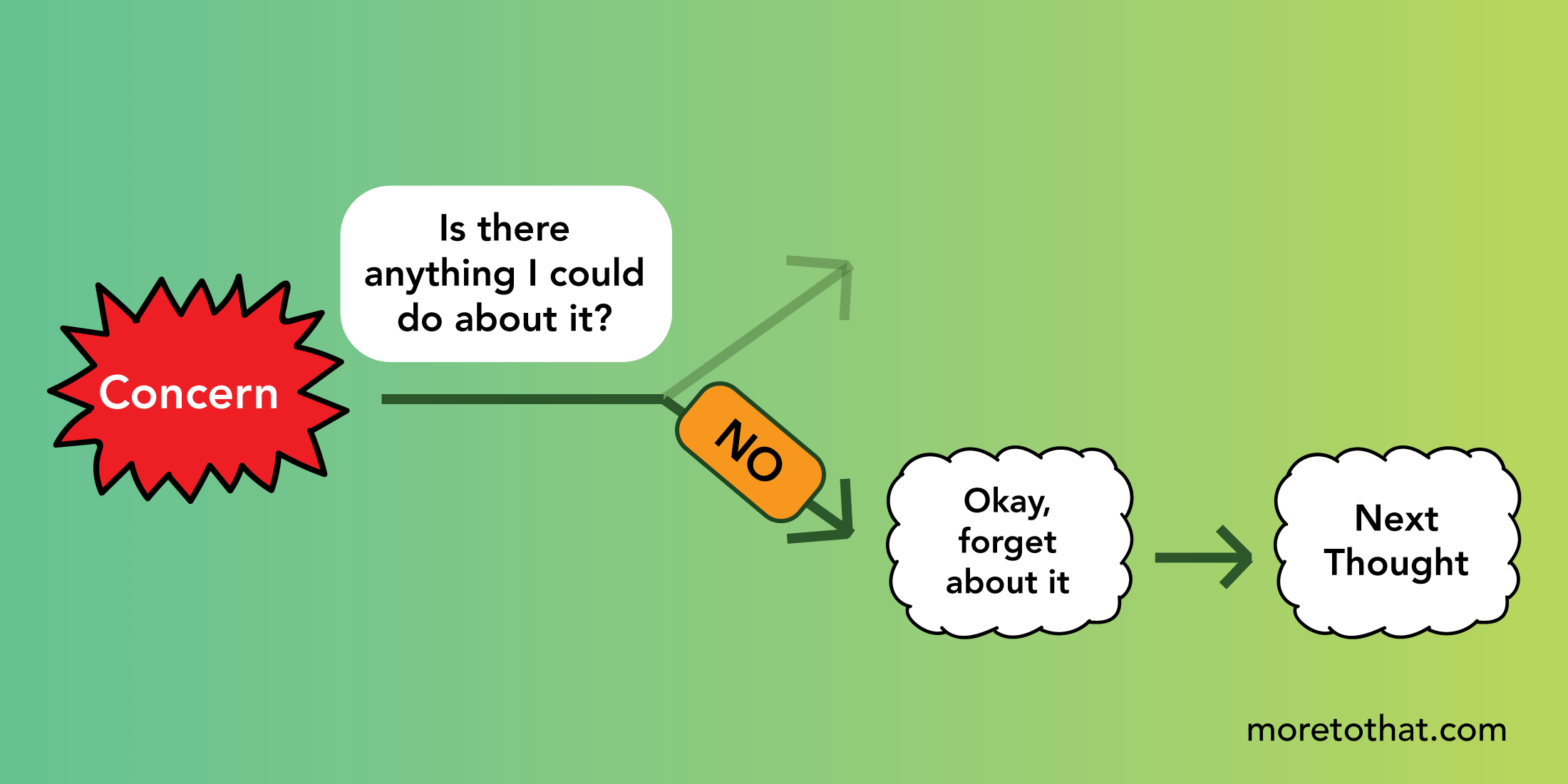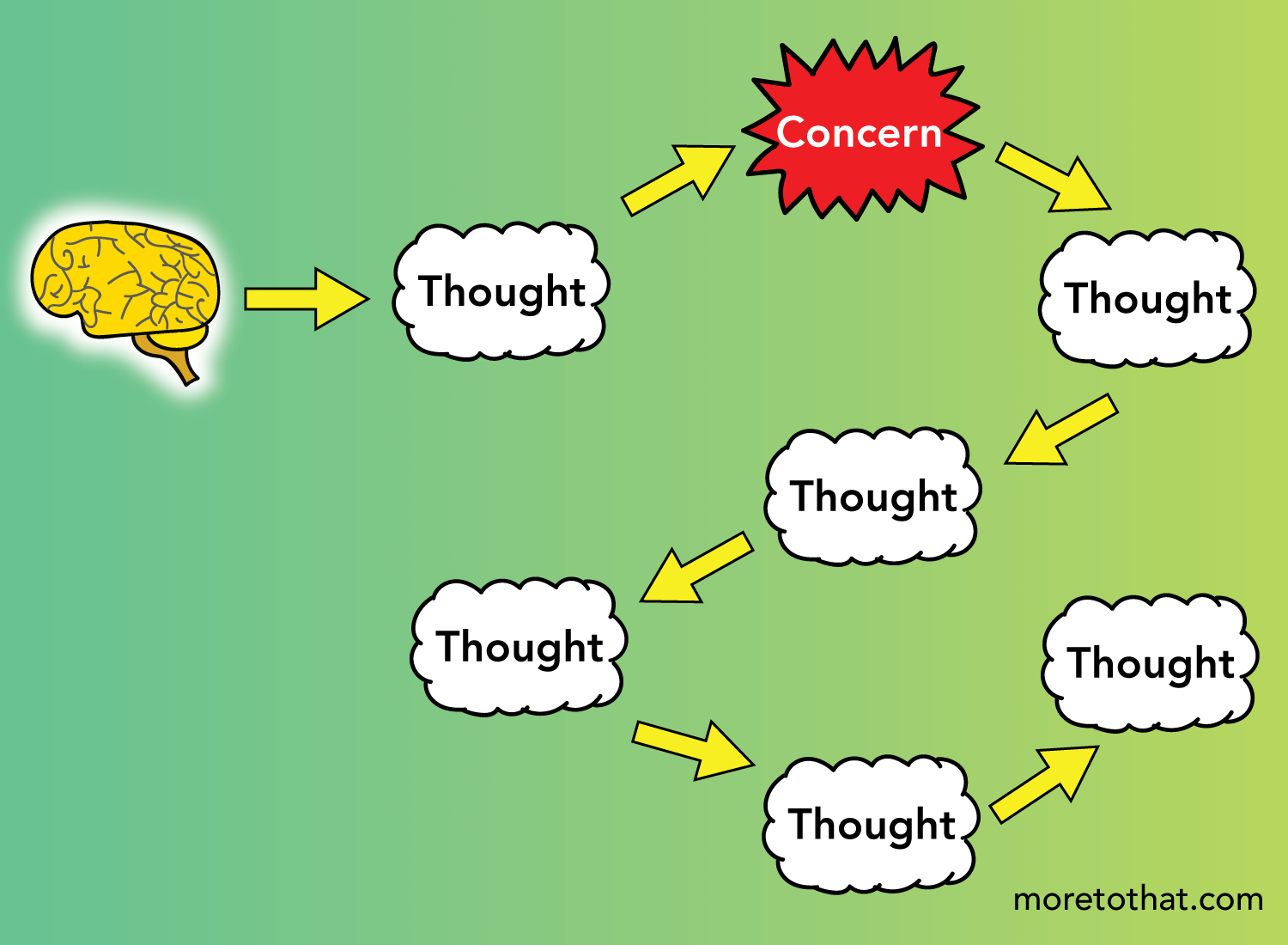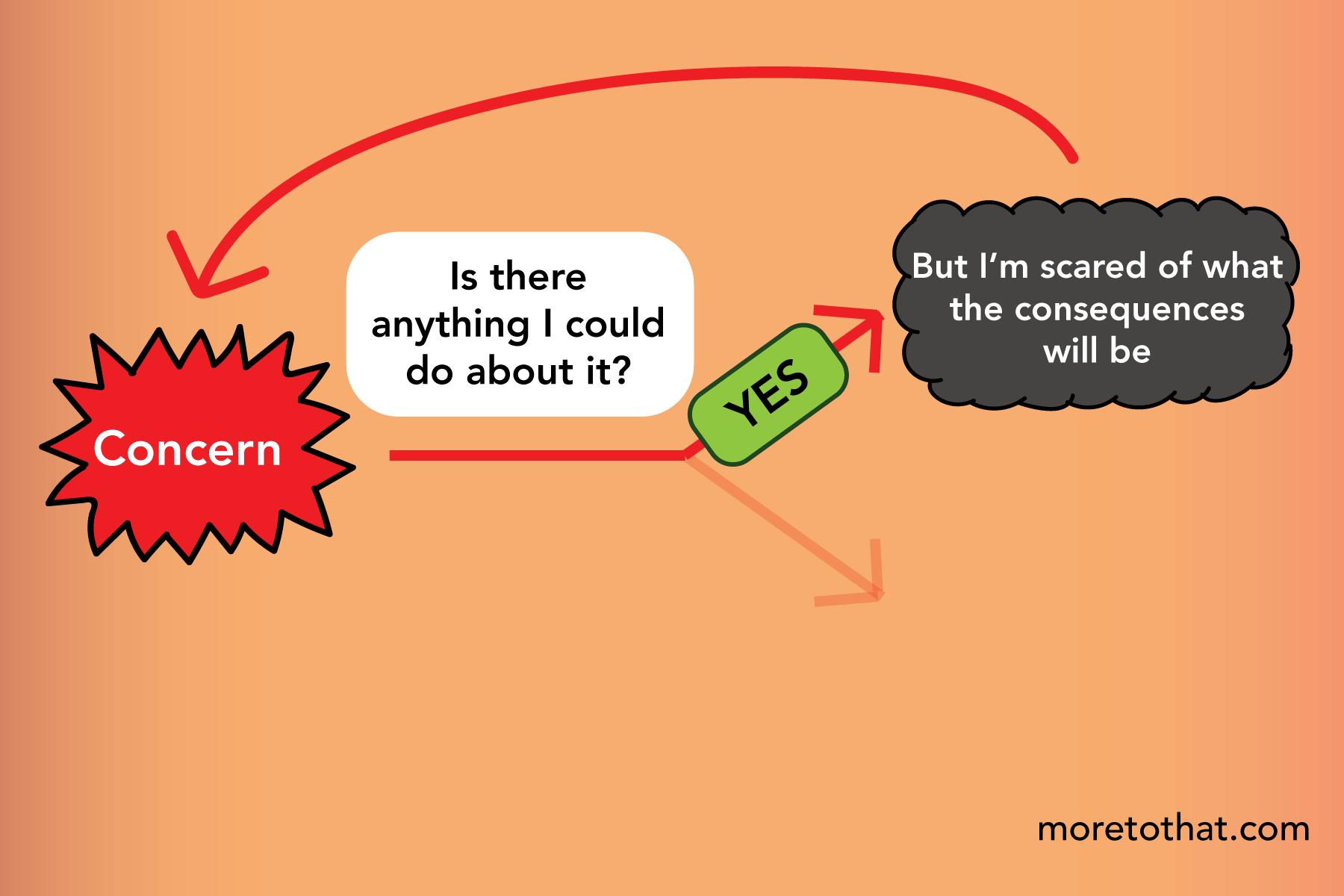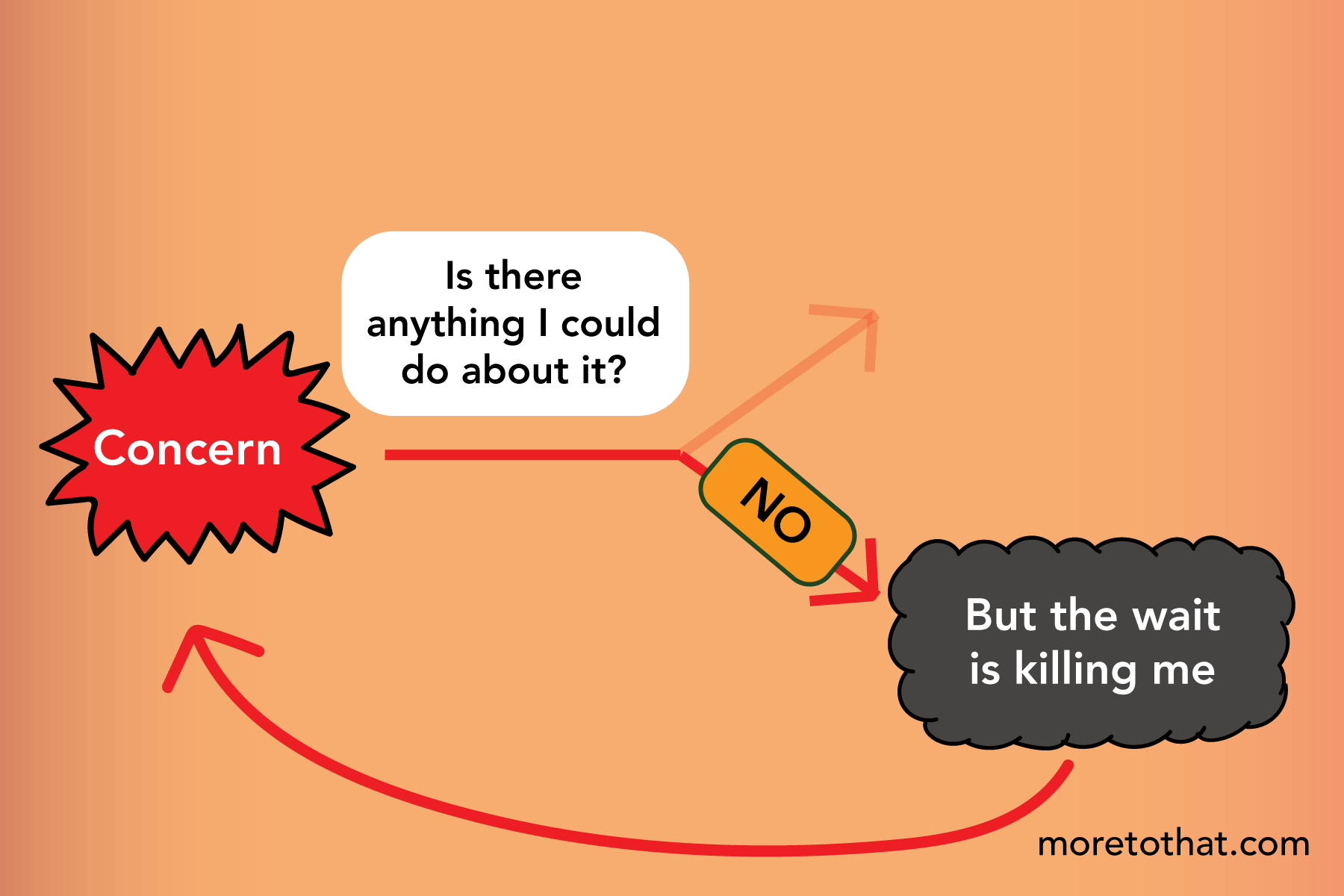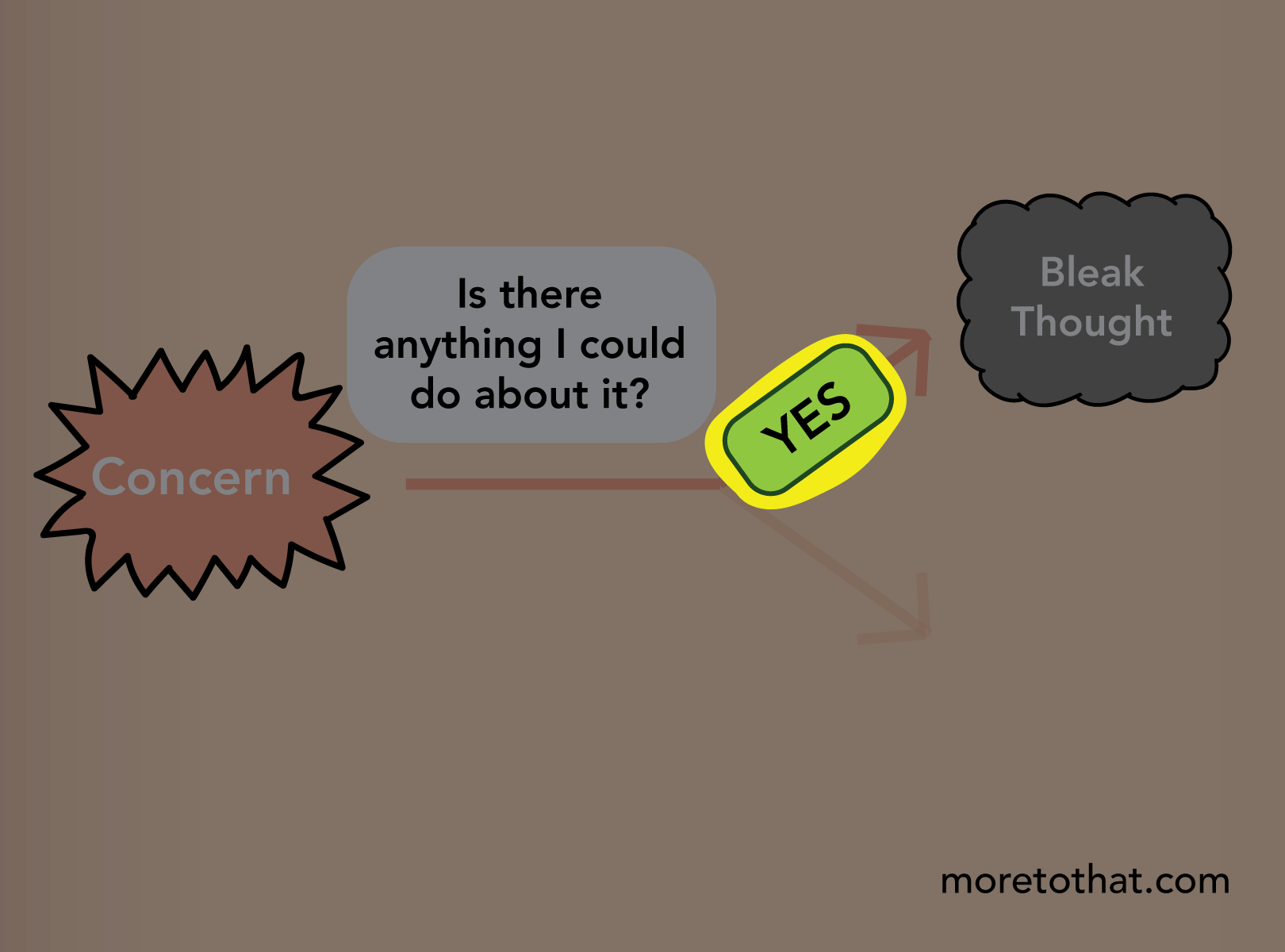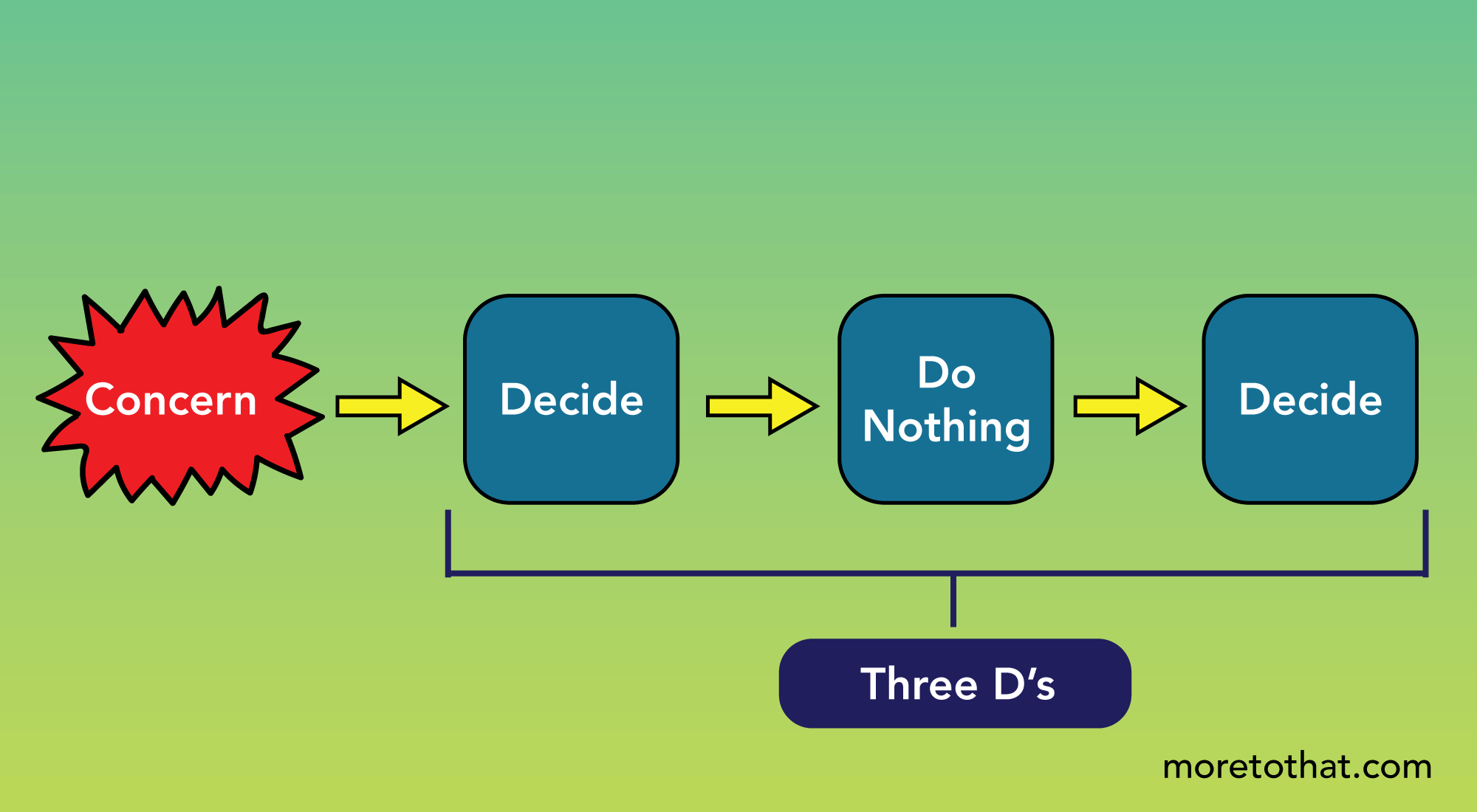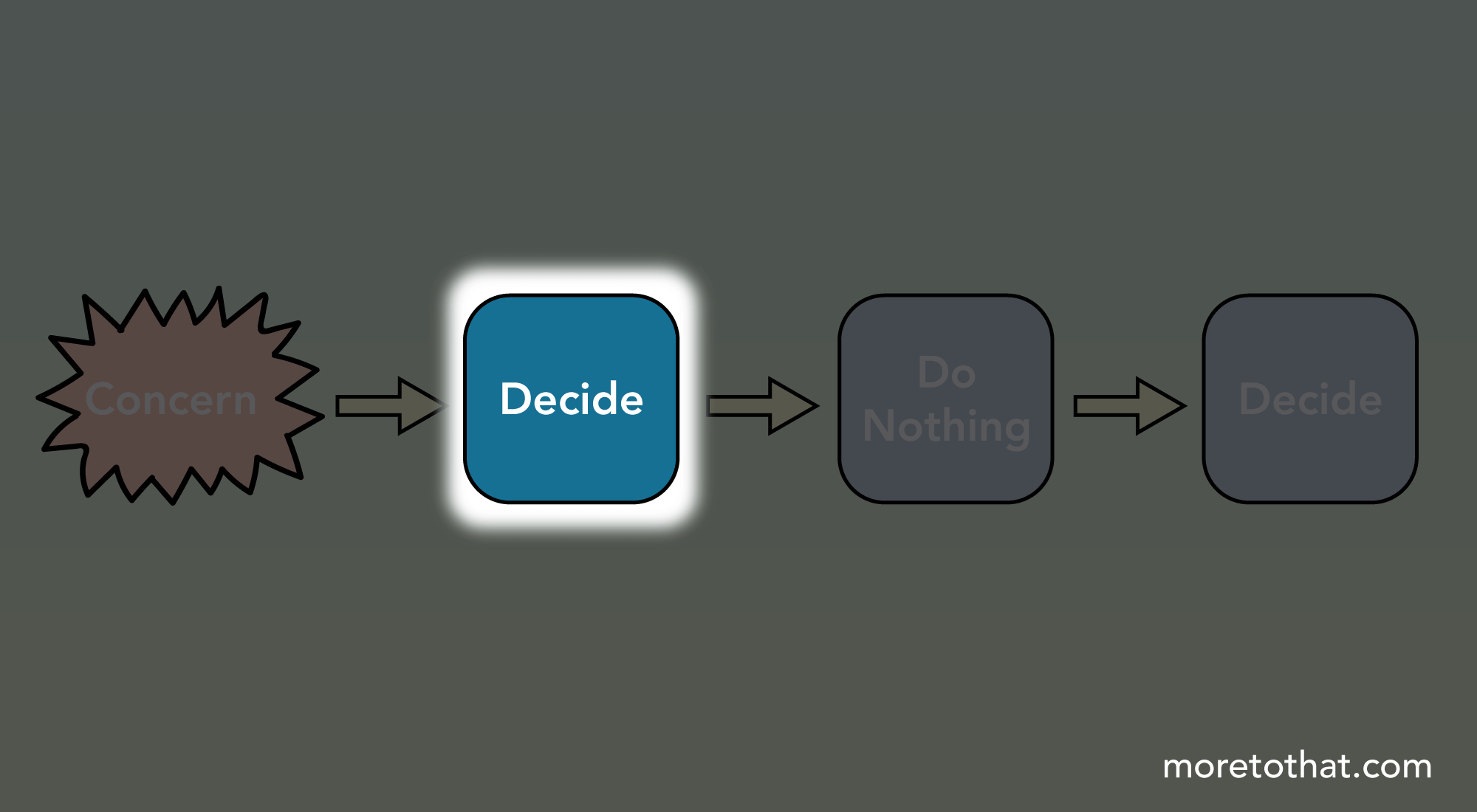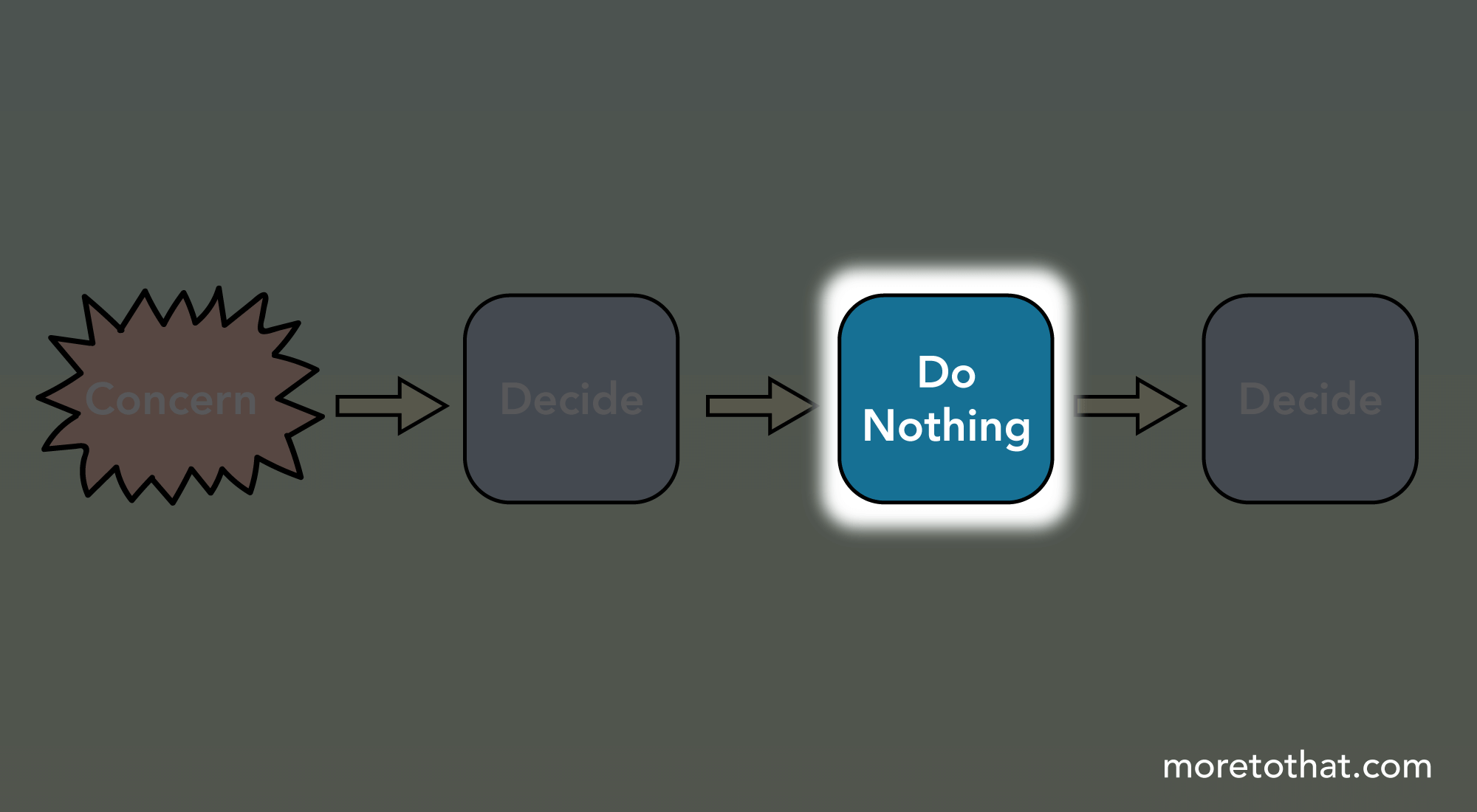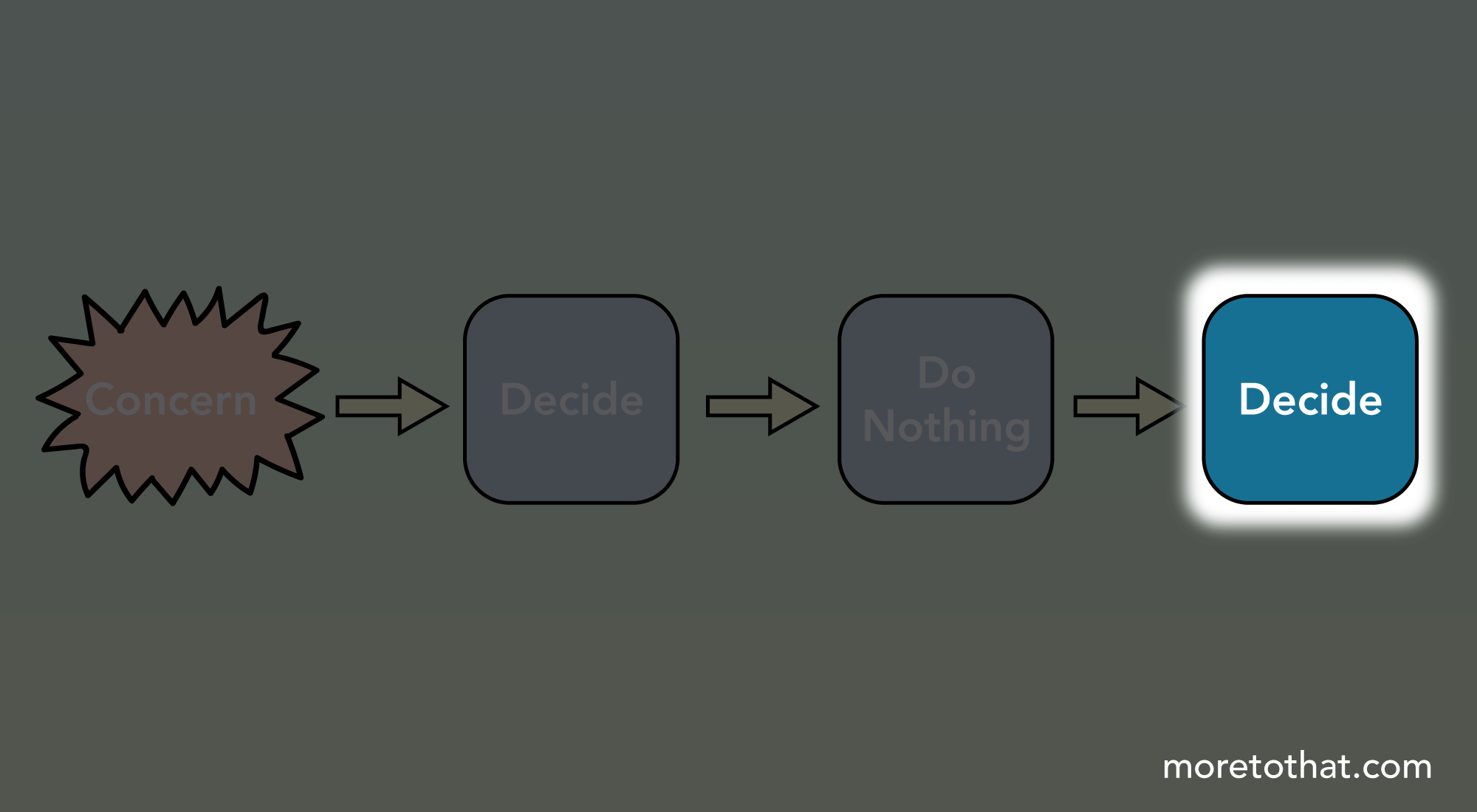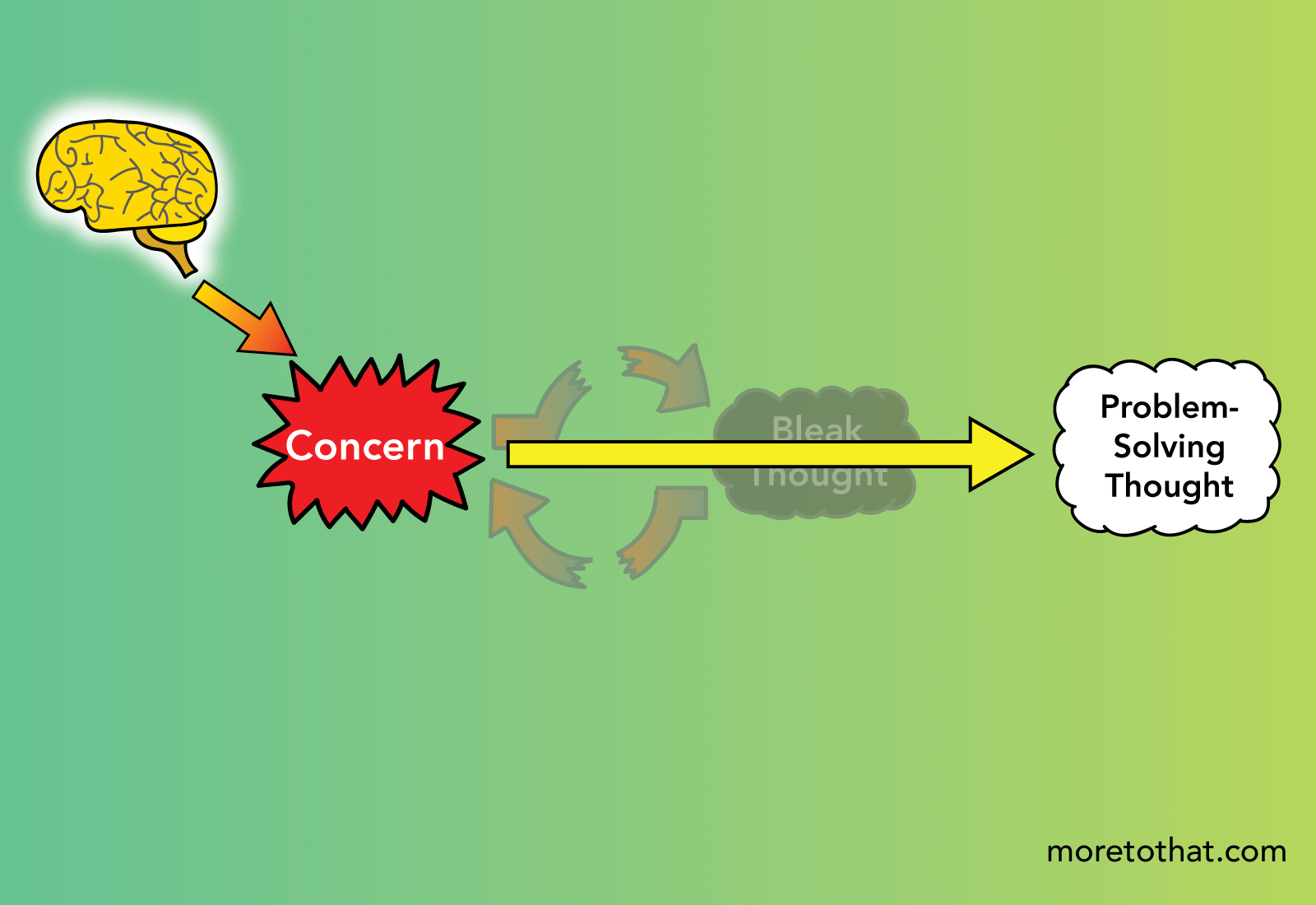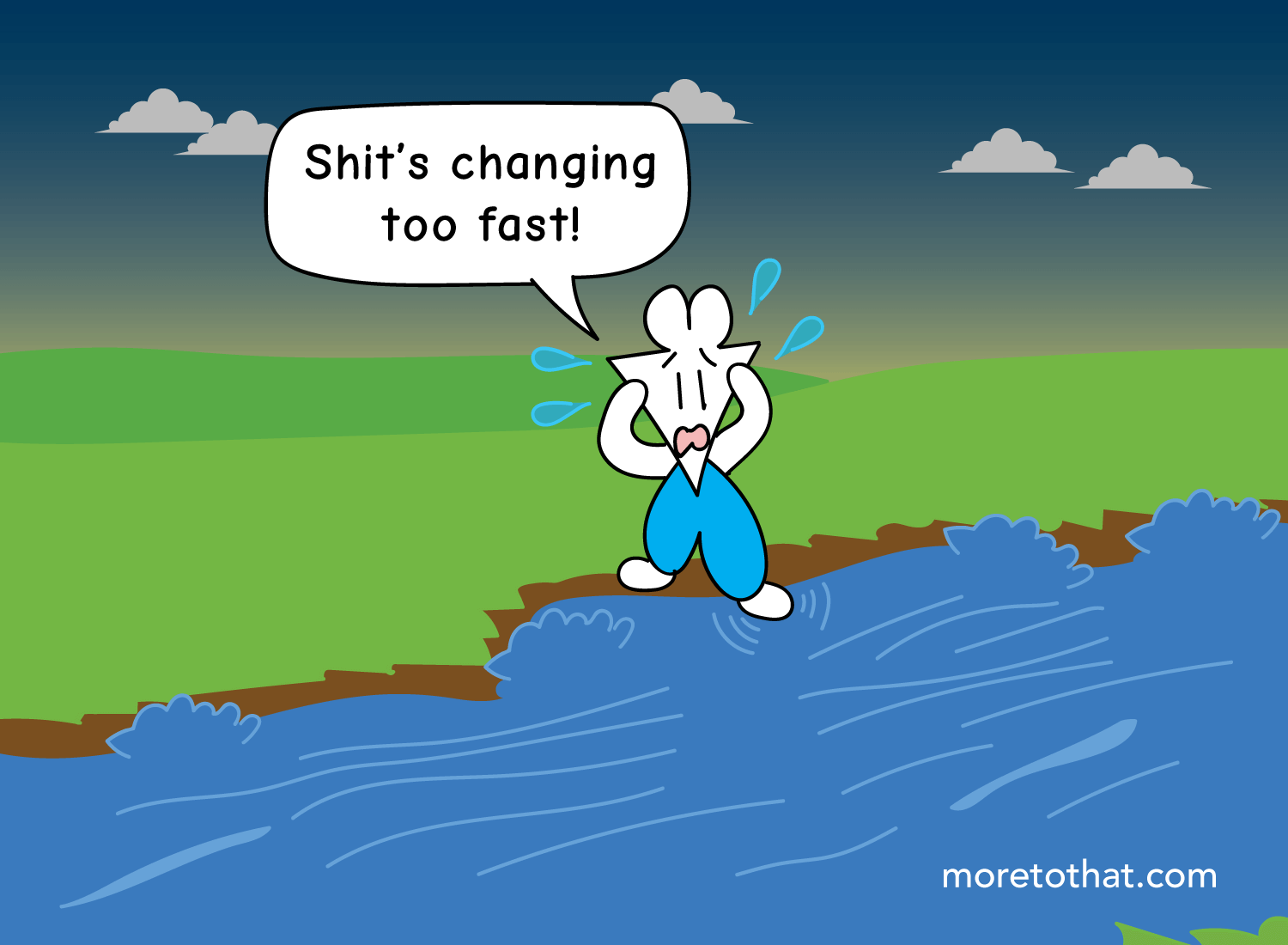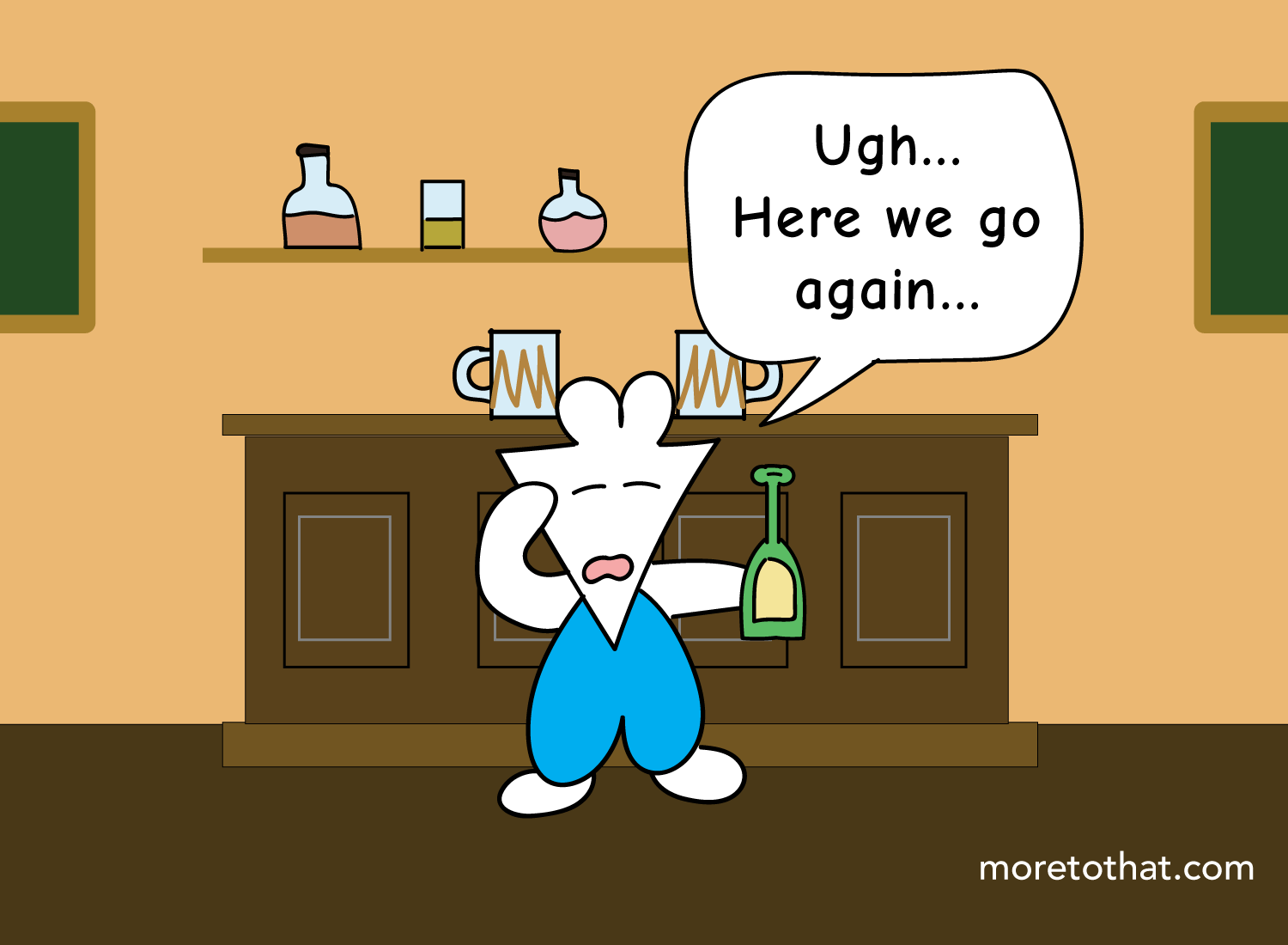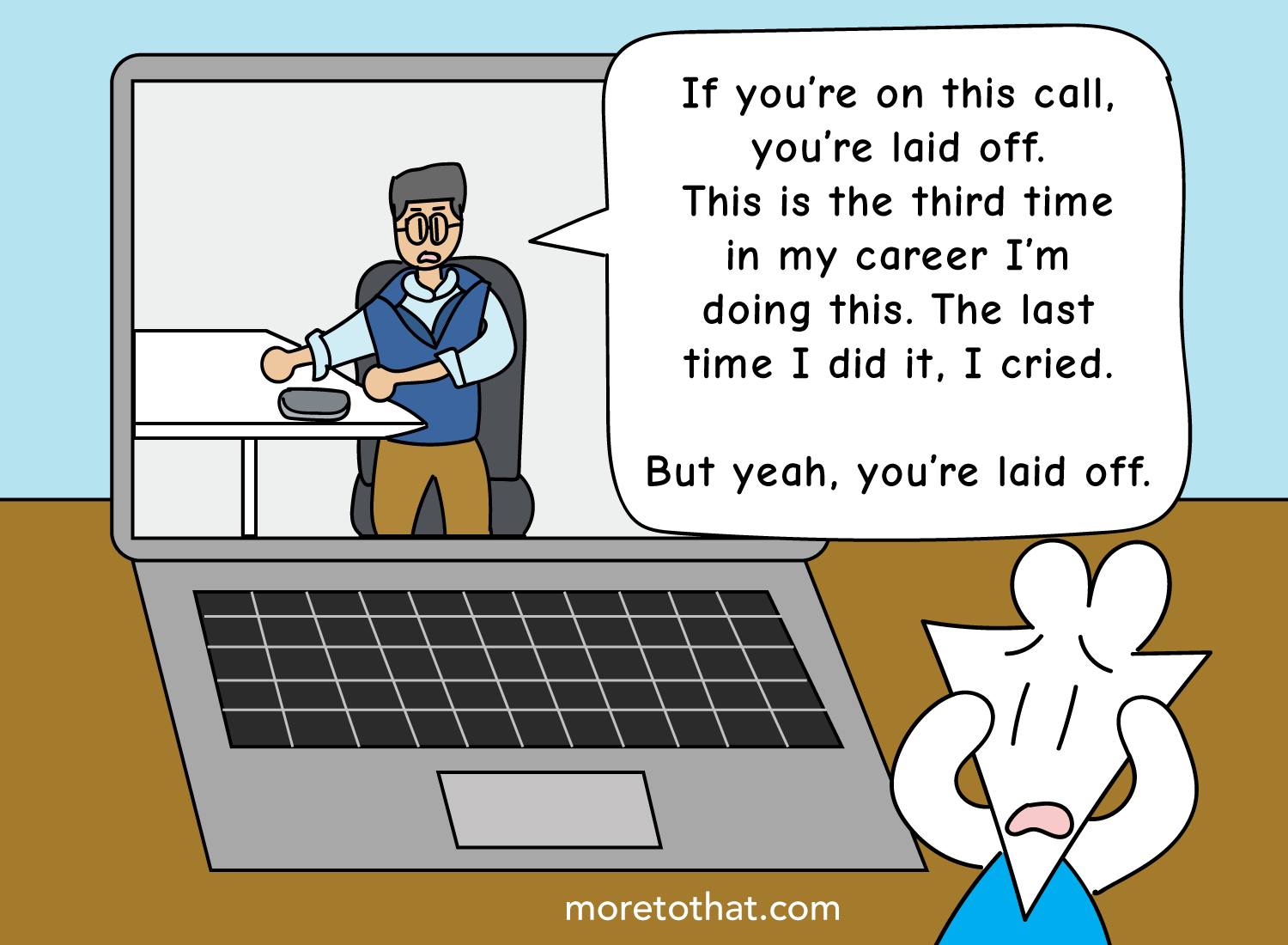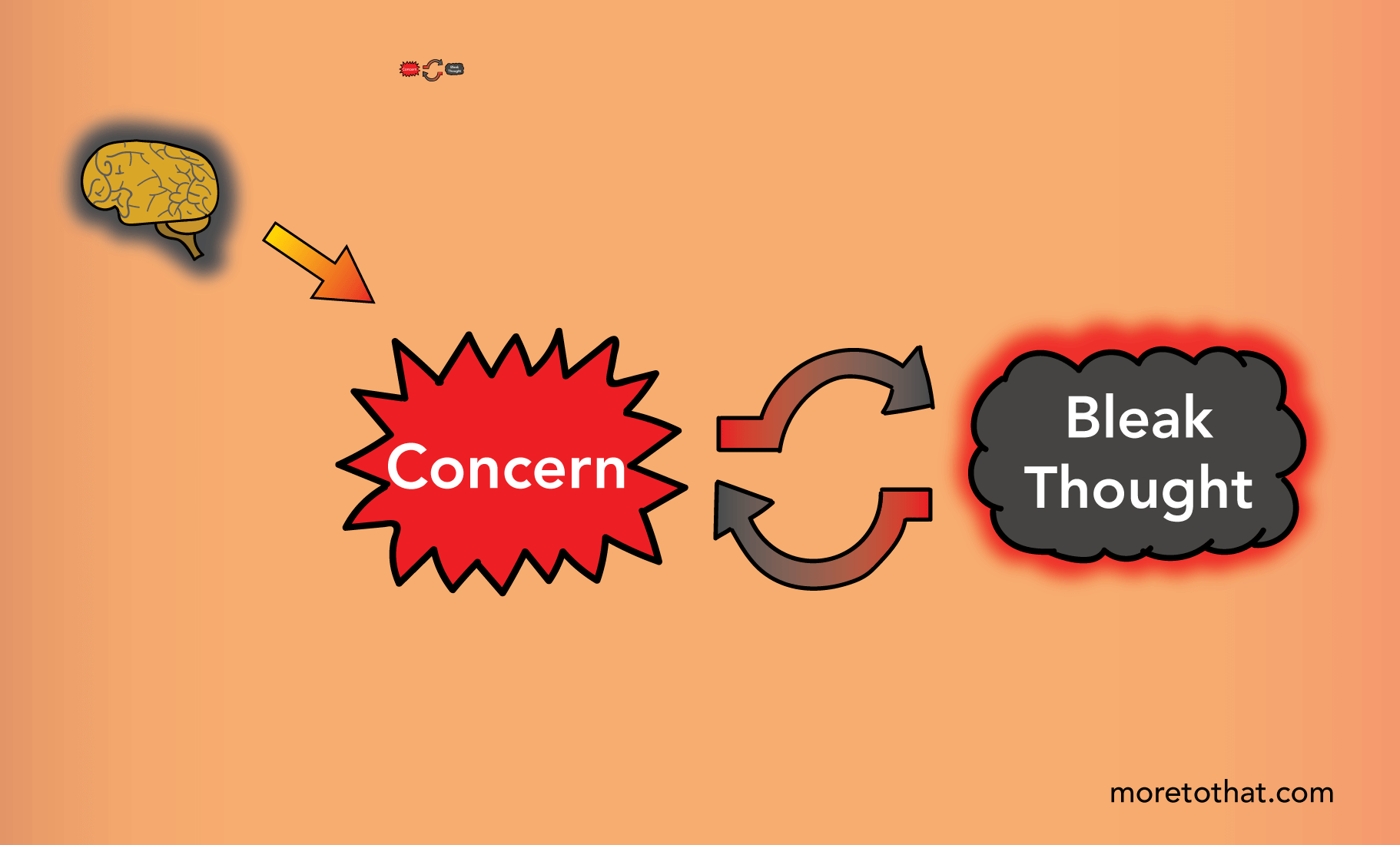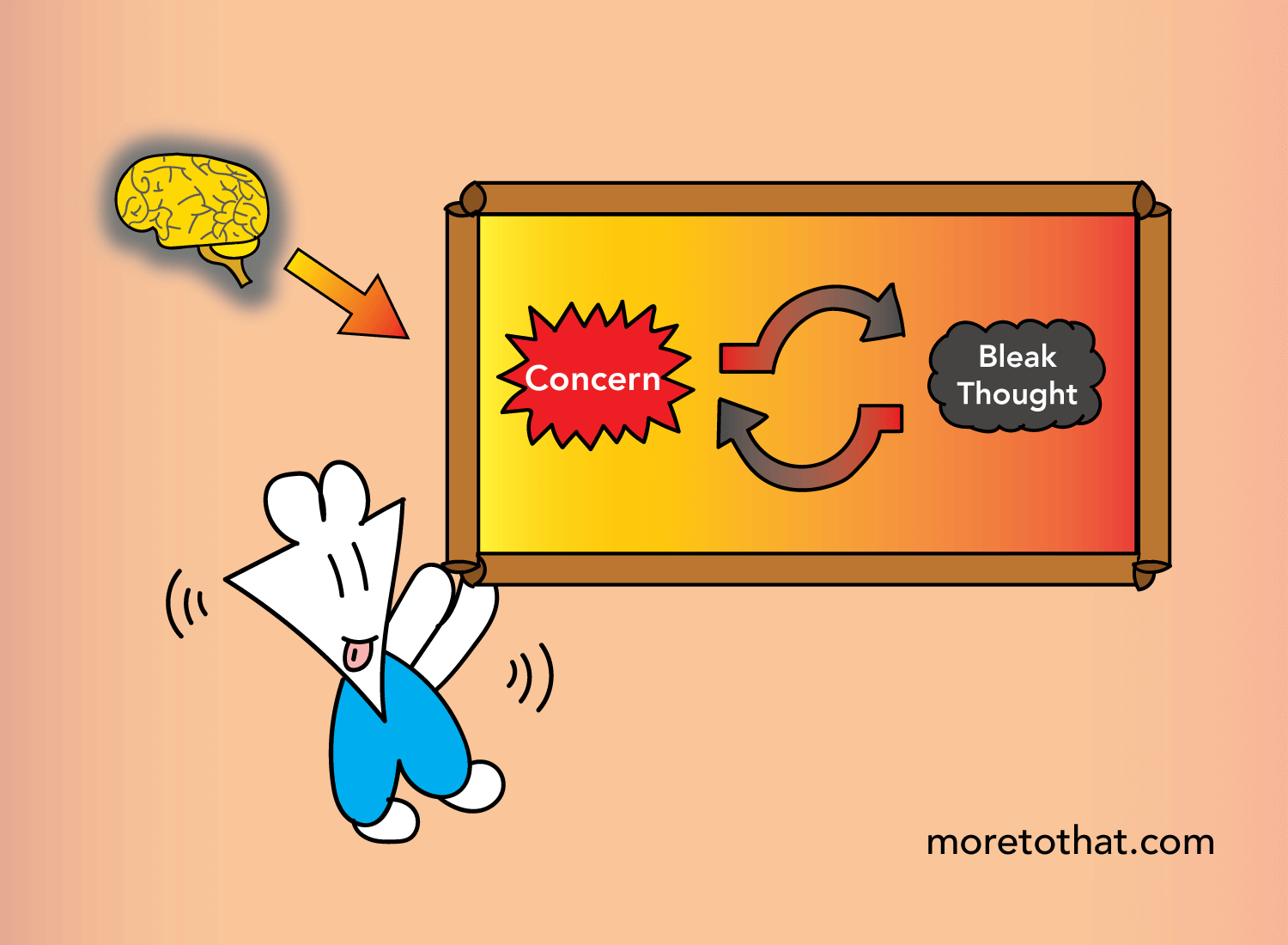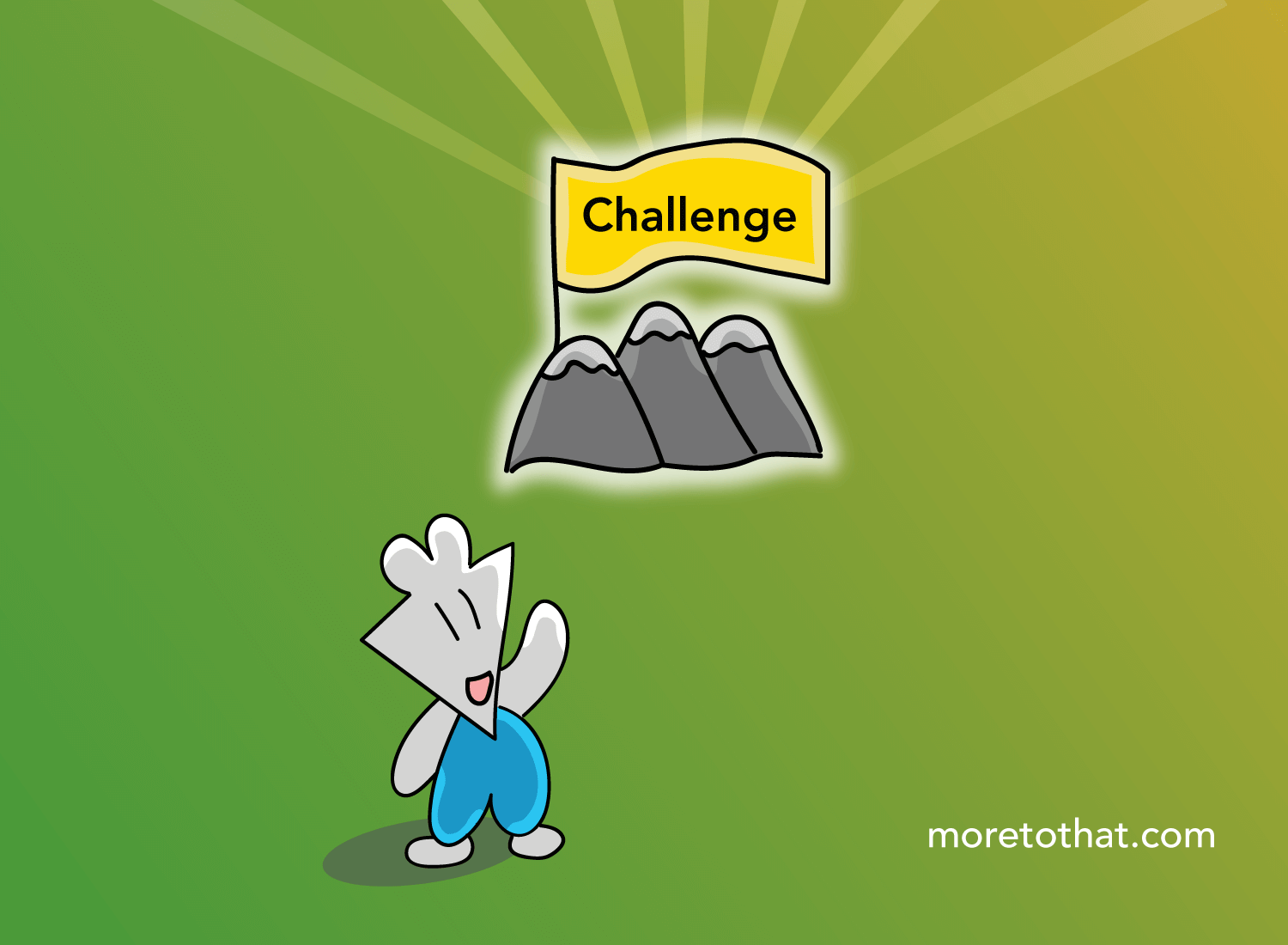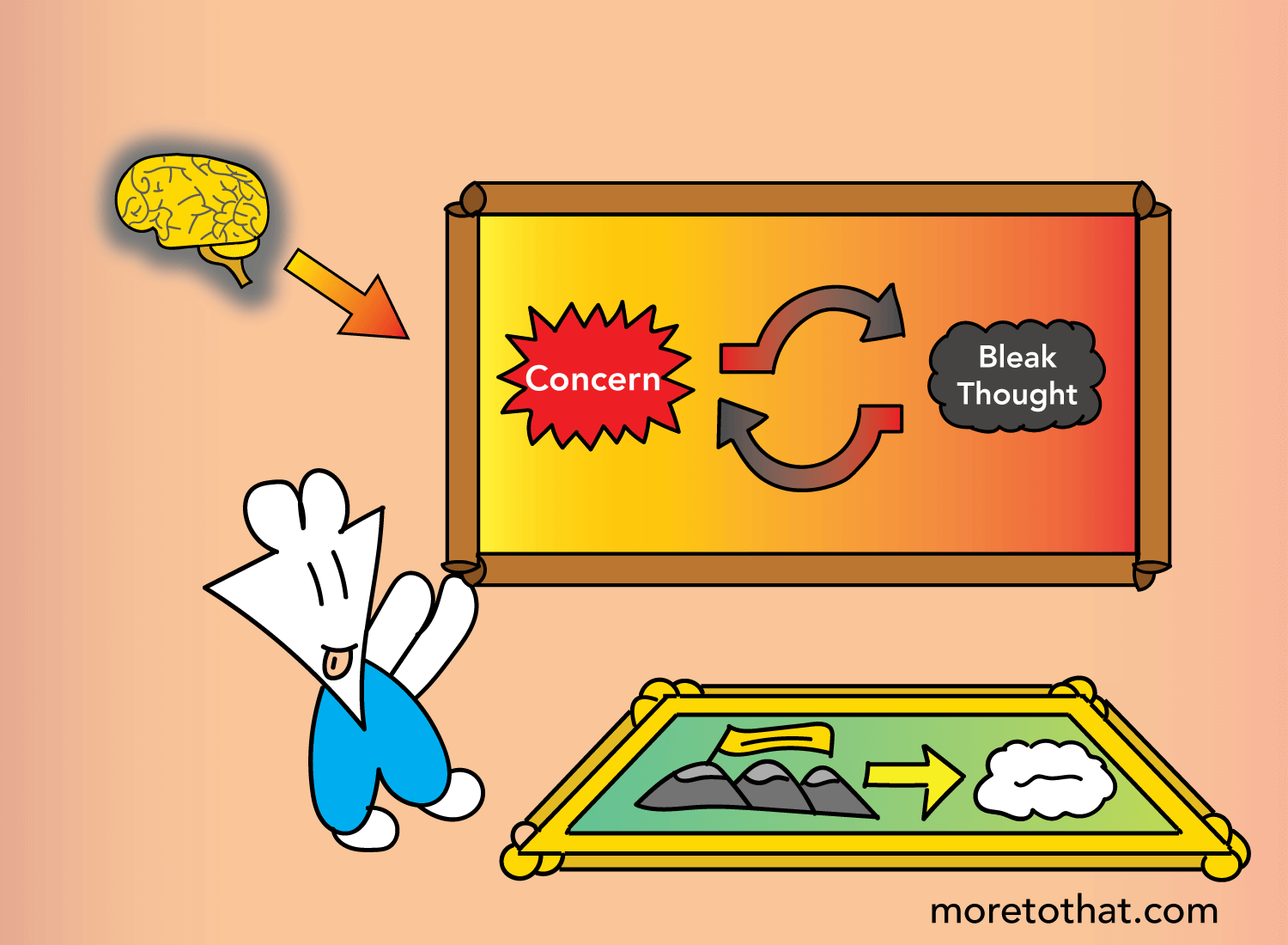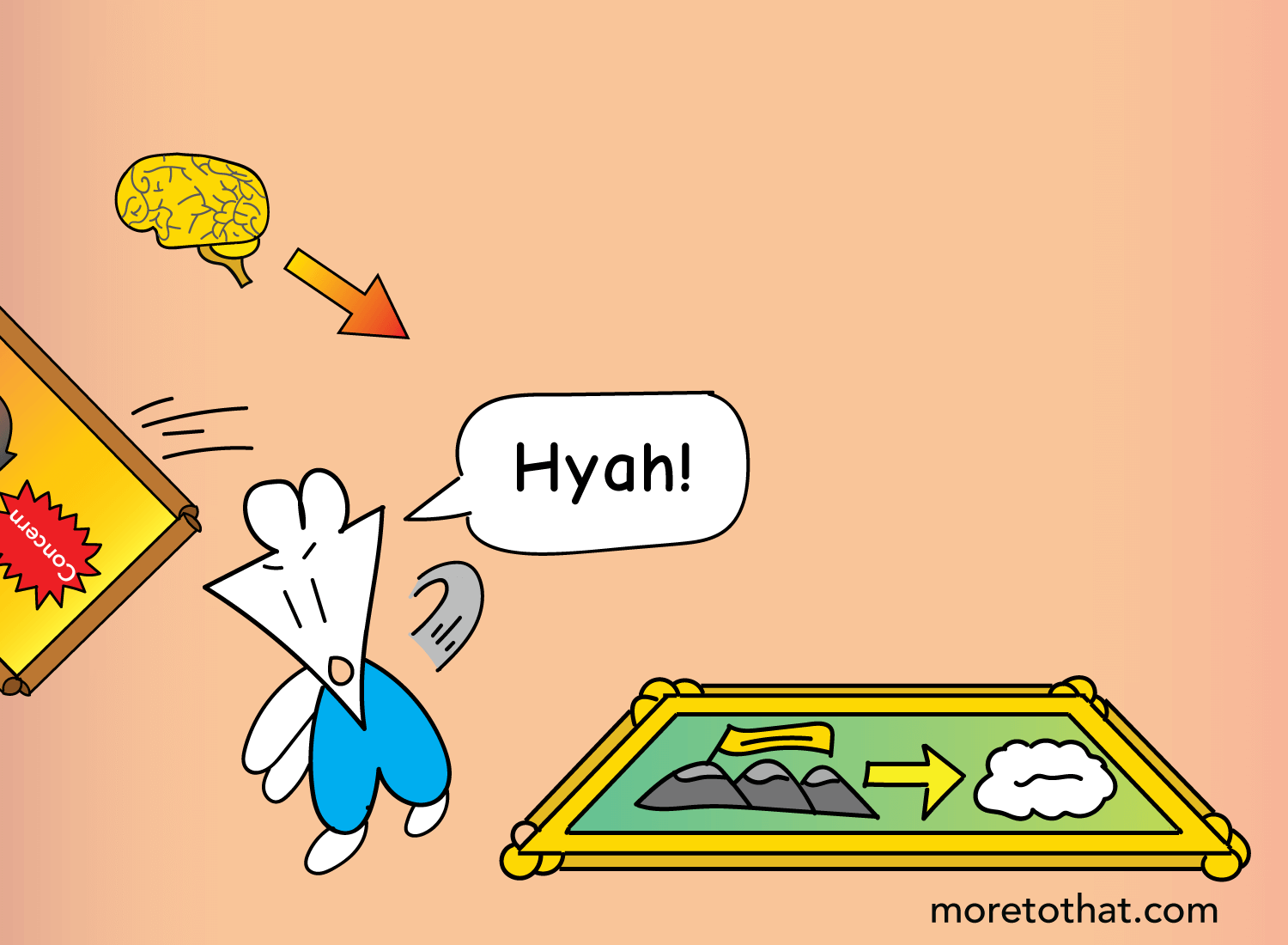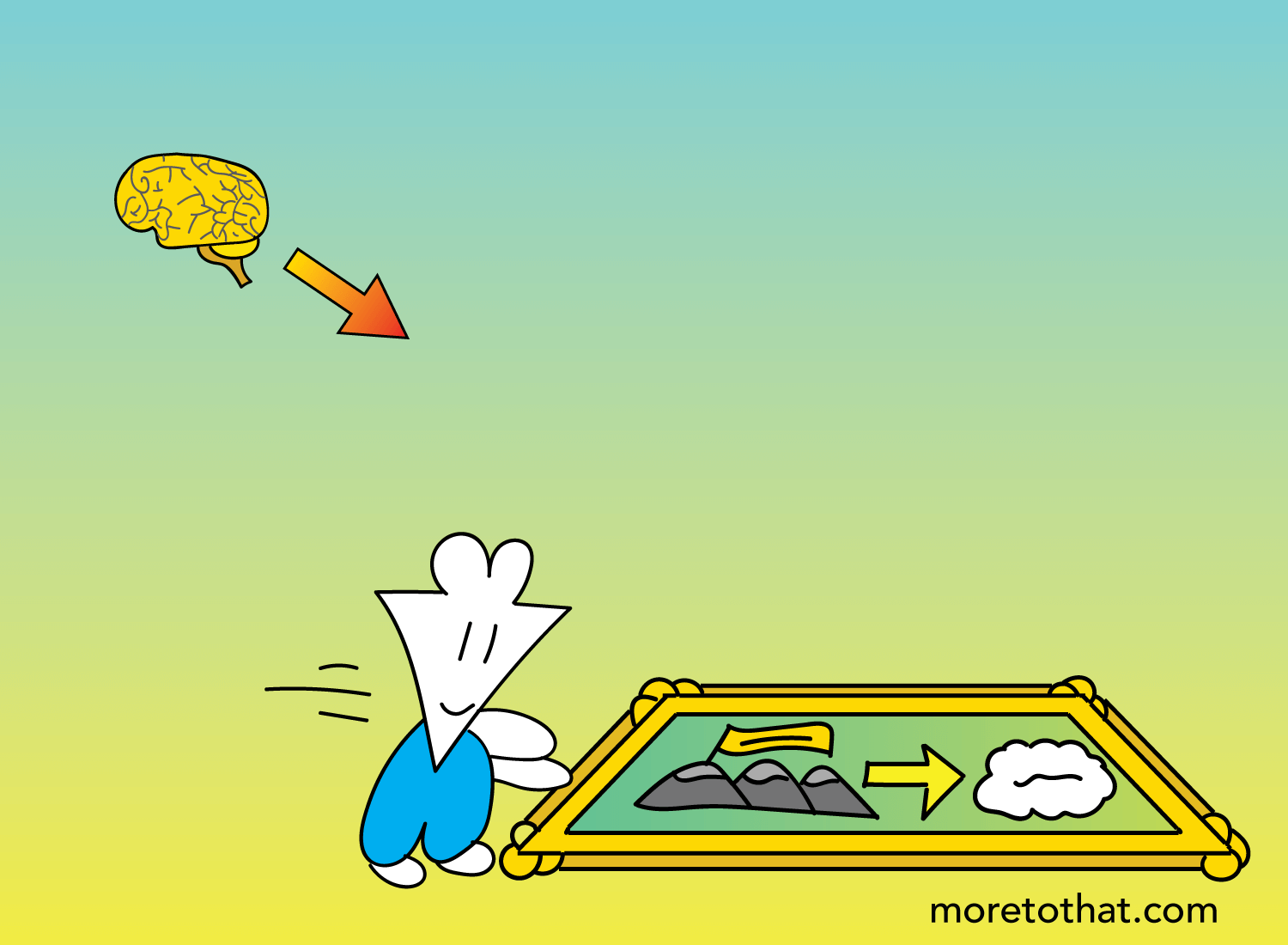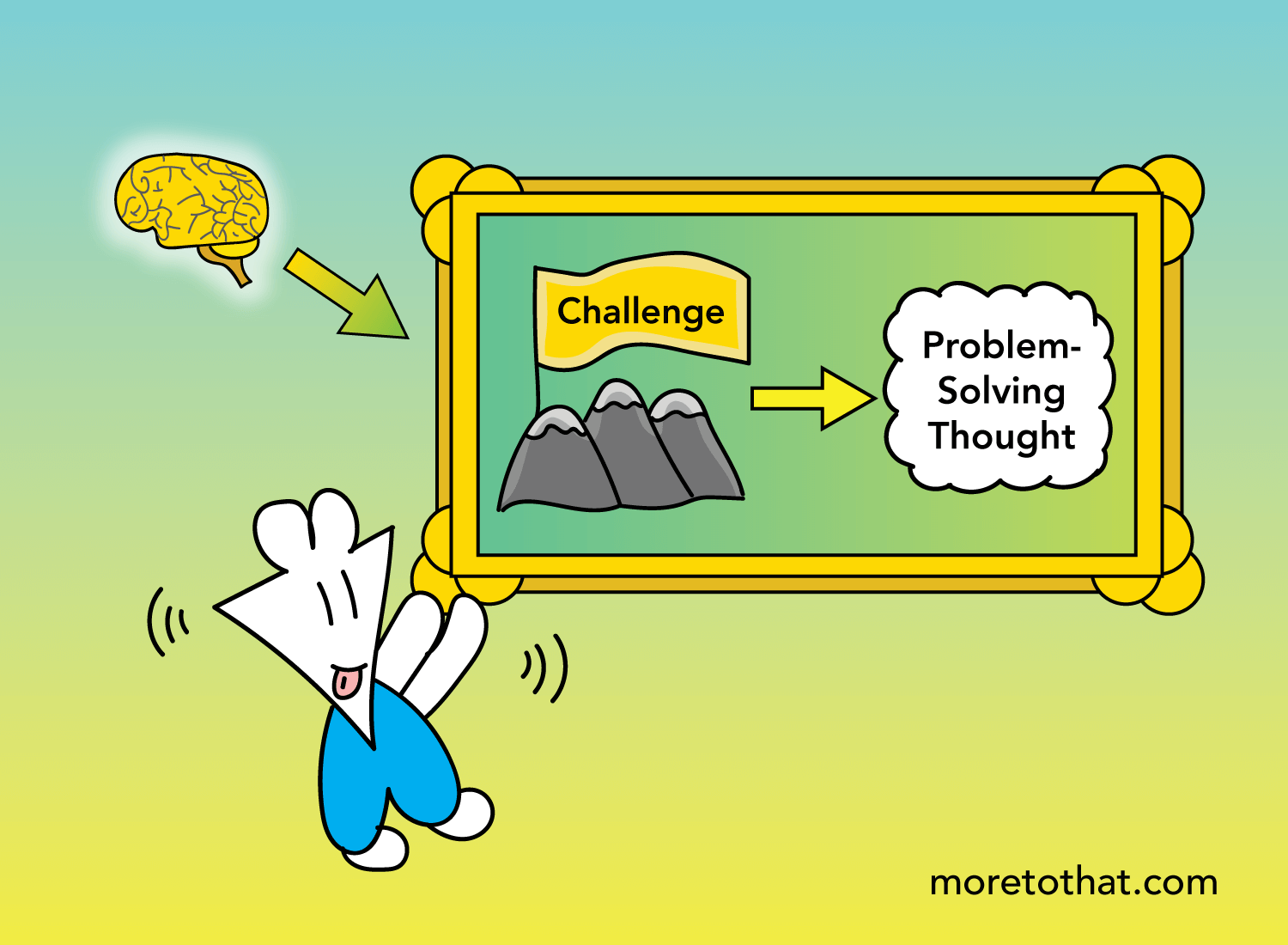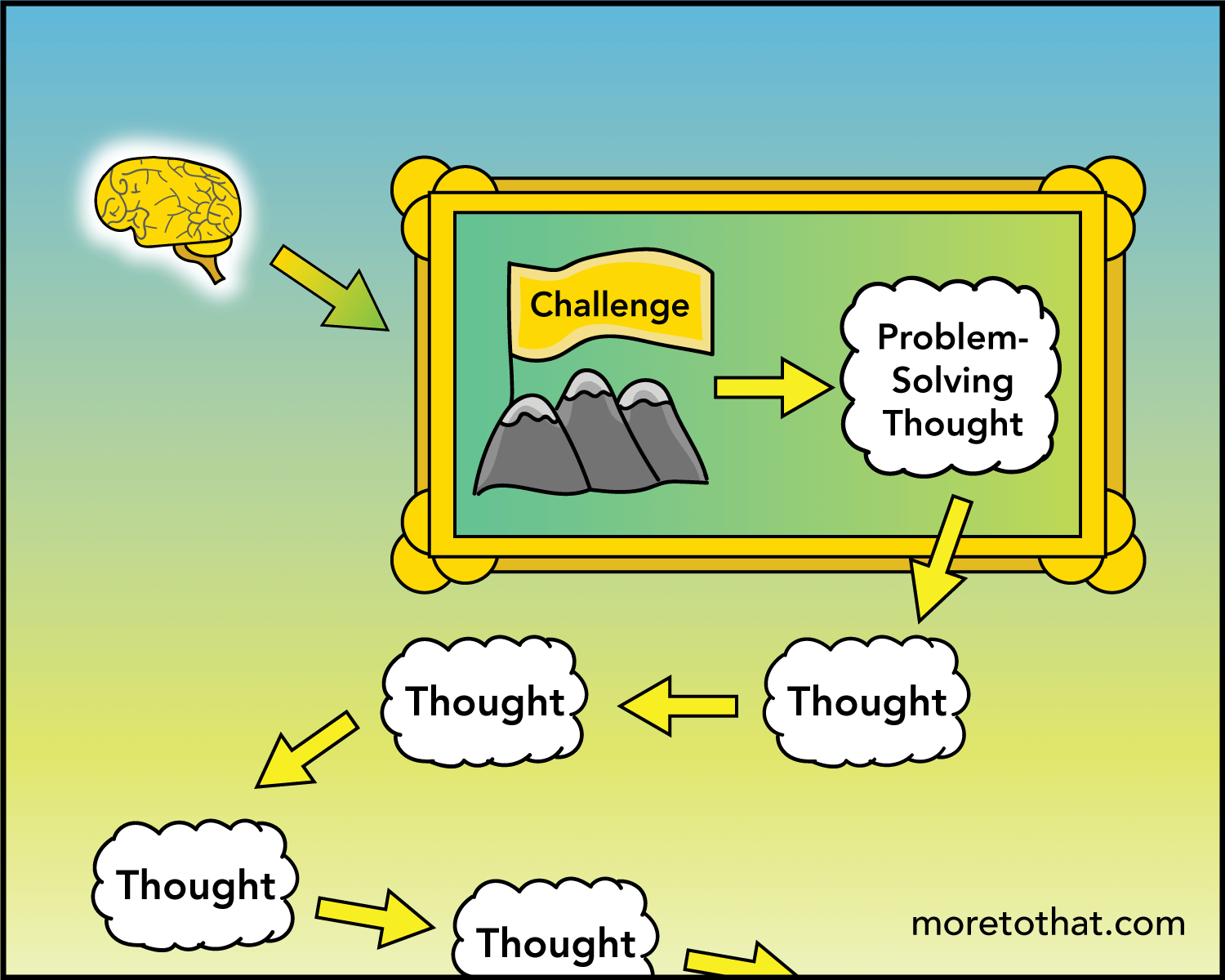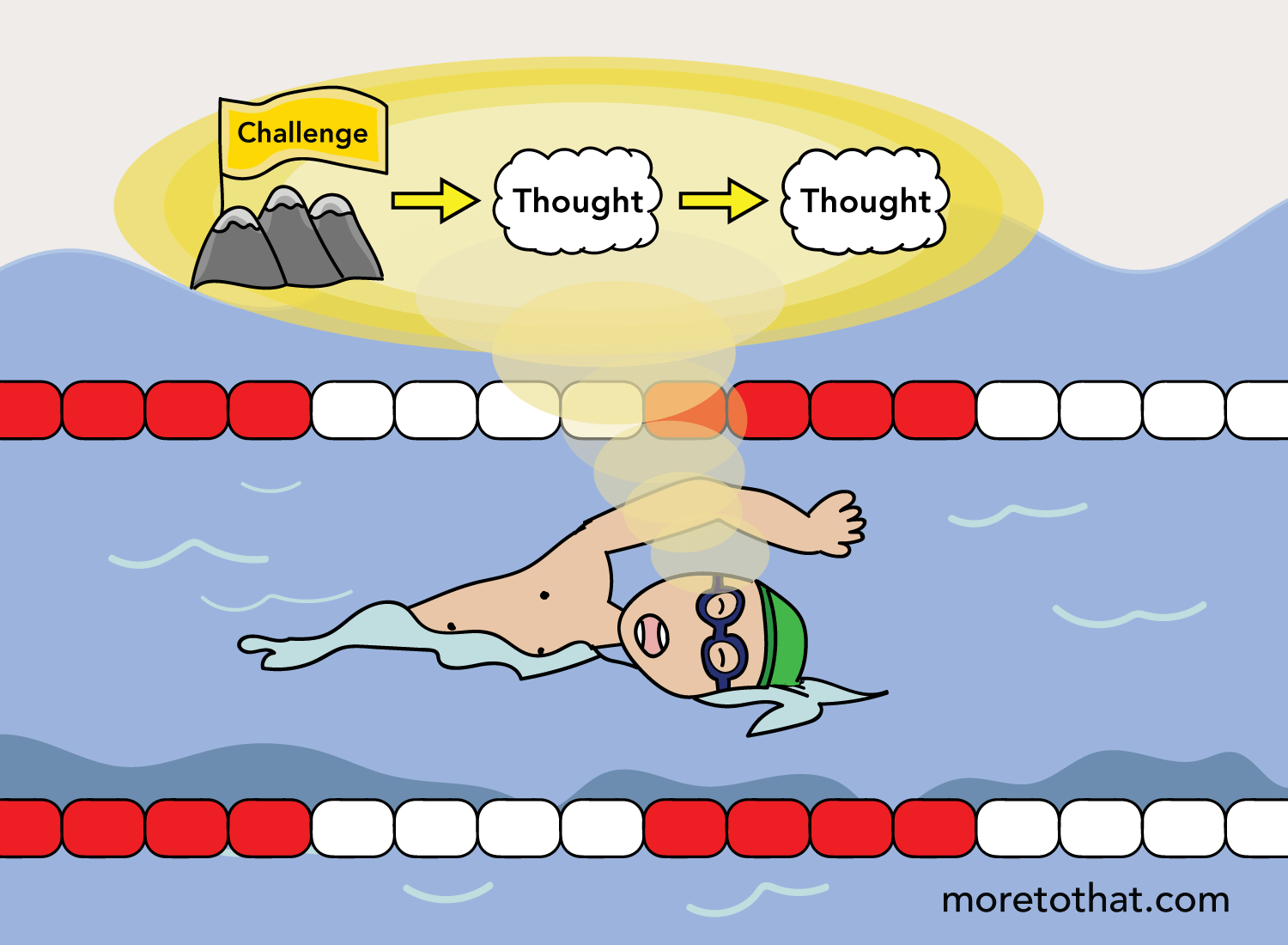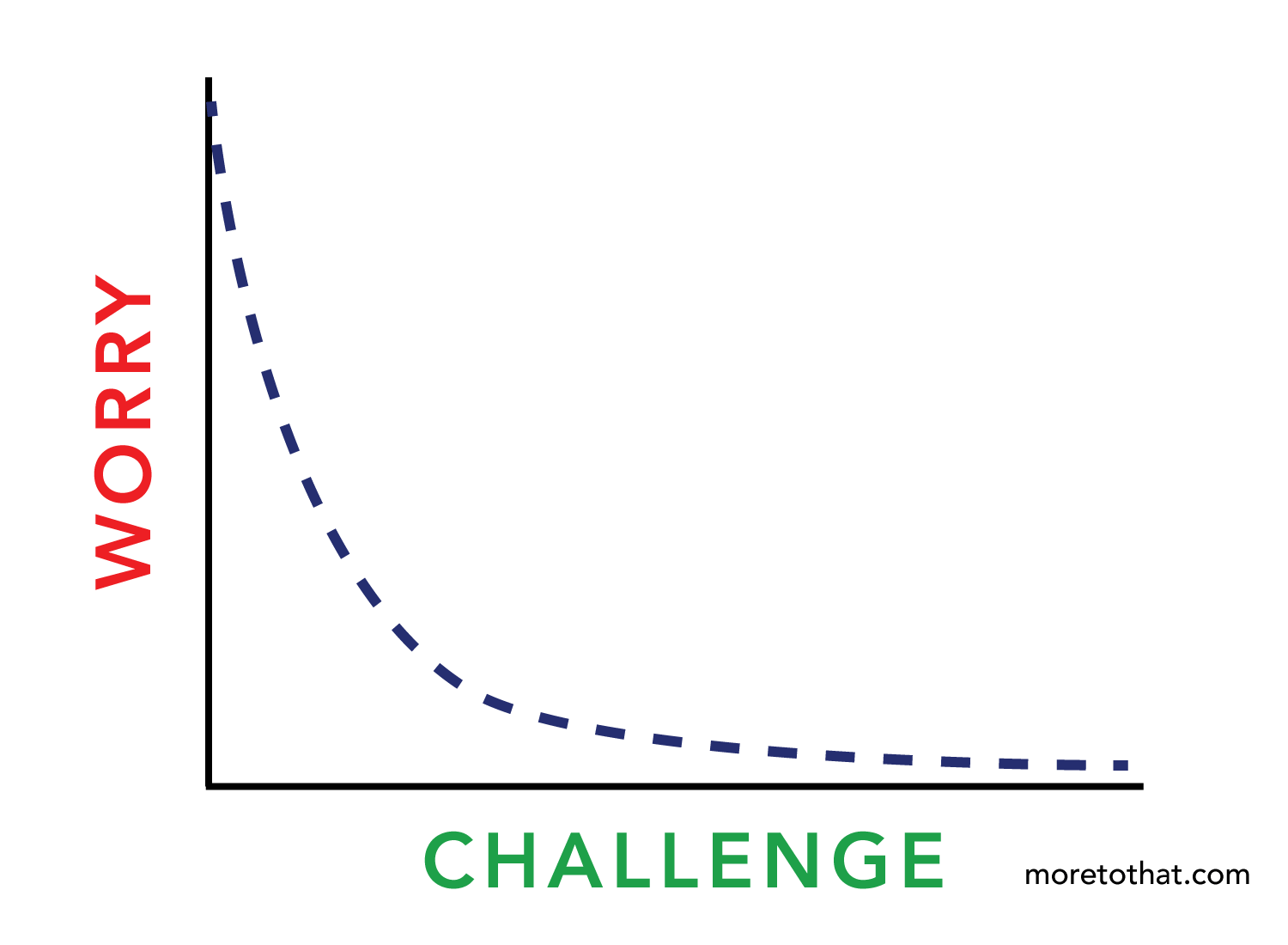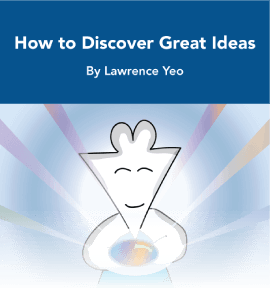How to Beat Worry
In a vulnerable moment, my friend once told me:
To that I responded:
And that was that.
While that went down as the least helpful response I could give to a friend, I also felt like that was the only thing I could say. I could’ve asked him, “What are you worried about?” and then proceeded to listen and give my take, but that would have felt a bit unwarranted on my part.
Because the truth is, worry is perhaps the greatest emotion I struggle with, and I often feel like I’m in no position to offer any advice on this topic. I’ve been a worrier ever since I was little, and it’s only in the last few years where I’ve taken a proactive approach to change that. Fortunately, I’ve made a ton of progress in this realm, but to be clear, I’m not free from worry’s clutches either.
The reason why worry is such a difficult emotion to tackle is that awareness simply isn’t enough. To be aware of an emotion like anger often allows you to divorce its physiology from its poignancy, but being aware of your worry often has the opposite effect.
Worry is driven by the fear of uncertainty, and being aware of this fear is further acknowledgement that you don’t know what will happen next. You can tell yourself, “Hey, there’s nothing to be worried about,” but it will often feel like a form of self-deception. After all, the future is nothing but predictions and projections, and our tendency to imagine bleak pictures provides no shortage of things to ruminate over.
The antidote to worry is not to be passively aware of it, but to take proactive steps to fix it. Mindfulness isn’t enough when it comes to the torrent of concern. In the same way that being aware of a car engine failure does little to get you to your destination, noticing that you’re a worrier does little to get you to a higher plane of clarity. Rather, you must commit to understanding the anatomy of worry, and then go in like a mechanic to disentangle what went wrong.
To start, let’s look at the mind of a non-worrier and see how thoughts flow out as a result.
One thought flows right into the next, and this chain continues onward until we drift off into unconscious. Thought begets thought, and this is the natural state of things until we hit the soft limit of sleep or the hard limit of death. Nothing too remarkable here.
Now let’s shift our attention over to the mind of a worrier.
For the most part, a worrier’s mind looks similar to that of a non-worrier’s. A thought arises, flows into the next one, which then transitions to the next, and so on. All seems fine and well… until a specific texture of thought is introduced into the picture.
That thought is what we’ll refer to as a concern:
A concern is anything that prompts a negative portrayal of the future. It represents a situation in the present moment that has the potential to go badly, whether you have any control over it or not. What you’re experiencing today is interpreted as the shadow of a daunting tomorrow, and it’s difficult to see how it could be anything but that.
Given this dynamic, there’s no clear delineation between a “small concern” and a “big concern” in a worrier’s mind. The worry one feels about saying something stupid at work can feel just as poignant as the worry that’d be felt if the market crashed for the tenth day in a row. Even if you could rationally divide another person’s list of worries into small and big ones, it’s almost impossible for the worrier himself to adhere to that neat categorization.
That’s because in a worrier’s mind, any species of concern follows the same pattern. And it’s this pattern that creates the feeling of worry; not necessarily the magnitude of the concern in question.
The pattern itself is quite simple: A concern gives rise to a Bleak Thought, and this thought loops back to feed the initial concern at hand. This impedes the regular flow of thoughts that usually happen, producing the intensity of worry that accompanies this feedback loop from hell:
When a worrier is stuck in this loop, it’s incredibly difficult to get out. Even if you know that a concern is a small one (i.e. “I sent an email to my boss with a few typos”), any attempt to trivialize it won’t work because the concern itself isn’t what matters anymore. What matters is how the concern has led to the Bleak Thought (i.e. “My boss will think I’m an idiot from here on out”), and how that amplifies the importance of the event in question.
So what we need to do is to focus on how the initial concern flows into the Bleak Thought. This is where we’re going to put on our “mechanic” hats, delve into the machinery of worry, and figure out how to break the loop and reinstate the regular flow of fluid thought.
Let’s first zoom in on the implicit decision tree that lives within every concern:
When a concern arises, there’s a single question that accompanies it, no matter who we are:
This points to the question of one’s agency, and the way you answer it will define whether you are a worrier or not.
In a non-worrier’s mind, if the answer to this is “Yes,” then the train of thought flows rationally, like so:
That’s it. A decision is made to resolve the problem, and is carried forward accordingly.
Similarly, if the answer to this is “No,” then a non-worrier can simply move on, knowing that no personal effort would make any difference in this situation:
In a non-worrier’s mind, they’ll shift to problem-solving mode if something can be done, and they’ll shift to neglect mode if nothing can. This rational interpretation of a concern is what prevents any loop from occurring, and allows the flow of thought to progress onward on its usual course.
Now let’s take a look at the mind of a worrier.
When a worrier faces a concern, the same question arises:
But the way in which that question is answered leads to a big difference.
Let’s say that you said something regretful at a work party while you were a bit drunk. The next morning, the hangover wears off and you’re filled with worry at what people will think of you. Scenarios of you getting fired begin to surface, the terror of shame fills you, and a rush of anxiety wells up within.
At this point, you ask yourself if anything could be done about this situation. At first glance, the answer appears to be “Yes.” Perhaps you could give a call to your colleagues and let them know that you messed up, and that you didn’t mean what you said. Or you can set up a quick 1:1 with your boss and tell her about what transpired before she hears about it from anyone else. It’s better to get ahead of the wave than get caught up in it, right?
But then you wonder if all this problem-solving will just make matters worse. What if people didn’t think that things were a big deal to begin with, so by drawing attention to it, you’re just amplifying the issue? What if you’re implicating yourself by admitting you did something wrong, when you were just having some fun?
This kind of thought process is common in a worrier’s mind. Even when you think that something can be done to resolve a concern, it leads to a torrent of further questions that make you doubt your approach. You begin to fear the consequences of whatever action you want to take, which leads to decision paralysis. And because you’re not doing anything (despite believing that something can be done), this restlessness amplifies the importance of the concern, causing you to be caught in a vicious cycle of worry.
This restless worry also accompanies the flip side of the question.
Let’s continue the example from above here. Perhaps you’ve come to the conclusion that there is nothing you can really do about your predicament. You’ve accepted that you said a stupid thing while intoxicated, and will abstain from mentioning it any further unless you’re prompted to do so.
For a non-worrier, this is enough to simply move on with life. You had a small bump in the flow of thought, but now your mind has already moved onto other things.
But for a worrier, this seems nearly impossible to do.
That’s because a worrier’s mind is extremely sensitive to anticipation. Any slight indicator of the present moment going awry will be spotlighted, which makes it difficult to forget about the initial concern at hand. Since the mind is so attuned to how things may go wrong, a worrier feels like he’s perpetually waiting for something to happen.
When am I going to get that call into my boss’ office to talk about what happened? How am I going to respond when I get that call? Should I start looking for a new job to get ahead of things?
This anticipatory nature of worry makes it incredibly difficult to let time run its course. The common adage is that time heals all wounds, but for a worrier, time appears to be the source of them. The future is something to be feared, and this is what causes the feedback loop of worry to materialize.
Our role as mindful mechanics is to go in and break these loops. But you don’t do that by telling yourself, “Hey, stop being stupid and stop worrying.” That’s a useless imperative. The way you do it is to approach each leg of the decision tree and provide a game plan to handle each option. The antidote to worry is not shame, but self-compassion. By being patient and kind to yourself, you let go of the tendency to criticize and can see the rational solutions with more clarity.
With that said, let’s start with the first half: how to address the feeling that you can do something to solve the concern at hand.
Making a Decision Using the Three D’s
When a worrier thinks that something can be done to solve a concern, two conflicting desires emerge:
(1) The desire to solve it right away with an intuitive solution, and
(2) The desire to do nothing to avoid making it worse.
It’s the tension between these two poles that amplifies the worry at hand. Which do you go with? Is it better to do nothing and wait? Or should you hurry and put that immediate solution into motion?
For the most part, these are the wrong questions to ask. They force you to choose one or the other, and a binary set of options introduces further panic in the worrier. The right question is to figure out how you can combine the two things together to pave a clear path forward.
The way I see it is through the lens of what I call the Three D’s:
This is how it works:
After a concern arises, you ask yourself if something can be done, and if the answer is “Yes,” some semblance of a solution will come to mind. In the case of our drunken work gaffe, that solution may be to schedule a 1:1 with your boss to chat about what happened. A number of possible options will arise, but there will be one that your intuition clutches onto the hardest.
When this happens, decide that this is the solution you will pursue. Make that decision now, and make it quickly. This narrows down all the possible choices to just one overarching option, which removes the decision paralysis that often accompanies a worrier’s mind.
But now that you’ve made this decision, here’s the important part:
For the next 24 hours, do nothing. Don’t act upon that decision at all. Accept that you’ve made it, but see how it feels without actually carrying it out. Sit with your decision, and let the flow of time run its course for the next day:
The Do Nothing phase is important because time has a funny way of bringing clarity into a given decision. When you first make a choice after a concern arises, you do so when emotion is at its highest. The fear is fresh, the anxiety is all-consuming, and you unwittingly position yourself in survival mode. The urgency is what drives you to do something to solve it right away, whether or not any action is warranted.
But after 24 hours of doing nothing, the urgency wears off. And because you didn’t spend that time agonizing over which decision to pursue (remember, you’ve already made it in your mind), you could treat the Do Nothing phase as a period of normalcy. If you’d like, you can even call a friend to talk through the decision you made, because hearing yourself articulate your position will bring further clarity into what it feels like to have carried through with it.
Now after the full day is up, we arrive at the final D, which is to Decide once again.
This is where you make the final decision by asking yourself these questions:
How do you feel about the decision after doing nothing for 24 hours? Does it still feel like the right move to schedule that 1:1 with your boss to chat about what happened? Or does it feel unwarranted and overblown to do that?
If it still feels right to schedule that 1:1, then do it. Since you’ve given yourself the requisite distance from the initial decision, you’re now operating from a higher plane of clarity by the time you send that calendar invite. You can feel confident that it’s the right move to make, given that the urgency and anxiety that riddled you at first has lessened.
But if it now feels unwarranted to schedule that meeting, then don’t do it. And once you’ve told yourself you’re not going to do it, then treat that option as if it were deadwood. Let it float away in the ocean of your mind, as if it were never there to begin with.
It’s quite possible that after discarding this option, you may want to move onto another one. You think that the better decision is to gather your fellow colleagues instead and talk to them about what happened. If you want to pursue this route, put it through the Three D’s again. Make that initial decision, do nothing for 24 hours, and then decide once again. Maybe after then, you’ll conclude that this is the best option, and will carry through on it by moving on to a problem-solving thought (thus freeing yourself from the worry loop).
However, if you still decide to do nothing after this second round, then it’s time to call it a wrap. There’s no point in knocking down every possible option, as that’s just a recipe for worry to plague you. If the first two intuitive choices have been left for dead, then your intuition is telling you that there’s nothing for you to proactively do here. You may have believed that agency was an option, but you now understand that your desire to control the situation would just cause more problems.
At this point, you’ll realize that the answer to “Is there anything I can do about it?” is a fervent “No.” And in order to break the loop that exists here, you need to adopt what I call Worry Replacement, and allow time to flow onward and run its natural course.
A Relevant Note on Financial Worry
I chose the example of a drunken work gaffe because we all know what it feels like to have said something incredibly stupid. However, I get that it might be a totally unrelatable example at this point in time. With that said, let’s do a brief foray into a more timely concern:
A struggling financial portfolio.
If the concern here is a portfolio full of downward red arrows, the anatomy of worry is the same. The first question you’ll ask is: “Can I do something about it?” And chances are, the intuitive answer would be “Yes.”
The Three D’s framework would apply in this scenario as well. First, make an initial Decision that aligns with what your gut is screaming out, which might be to sell your holdings.
All right. Cool.
Make that decision in your mind, but for the next 24 hours, Do Nothing. Act as if you’ve already sold, even though you haven’t touched a thing. Put your phone down and stop checking the market, even though your monkey brain wants useless real-time updates. Ignore it for the next 24 hours to regain control of your attention.1
Then once that timeframe is up, go to the last D and make another Decision. Now that the haze has lifted a bit, do you still think you should sell? Is that really the right decision, given that over the long-term, the market tends to go up?2
If you’re still convinced that you should sell, then go ahead, do it. But only do it after you’ve given yourself the headspace to be away from this issue for 24 hours. That’s the only way your selling decision will feel truly justified, and you won’t look back on this moment as one where you “panic sold.”
If you don’t end up selling, then great. You’ve funneled it through the Three D’s, and now you know that the answer to “Can I do anything about this?” is actually “No.” The market will ebb and flow on its own accord, and you’re not going to try and control things by selling your holdings.
In other words, you’ve chosen to be patient. And since this is extremely difficult for a worrier, we’re now going to delve into the practice of Worry Replacement to help with this process.
_______________
Worry Replacement and the Art of Letting Go
The philosopher Heraclitus famously said that you can never step in the same river twice. What he meant was that a river is always in flux, so the precise arrangement of water that you place your foot in will never be the same again.
In other words, change is the only constant. And while we all nod our heads to this platitude, it’s also true that this is an incredibly difficult statement to live by. The reality is that change is uncomfortable, and any alteration to an expected vision can introduce intense levels of anxiety.
When a worrier says that there’s nothing he could do to resolve a concern, he’s accepting the reality of change, but what makes him anxious is the knowledge that it’s not in his hands. Worriers often desire control because uncertainty is their enemy, and any absence of agency only gives more power to that foe.
So when the answer to “Is there anything I can do about this concern?” is “No,” that gives little comfort to a worrier. Instead of giving up agency and leaving things up to the winds of time, he will direct his agency to thinking about the concern and anticipating what will happen next. This is his desperate attempt to maintain control over the situation, even if it’s all an illusion.
The problem, of course, is that anticipation kills the ability to be present. And if the thing you’re anticipating is a negative result, then that can kill your ability to be functional. Ruminating over a bad result that hasn’t happened often feels worse than if the result did happen and you had to deal with the consequences. At least in the latter case, you’re no longer playing the dreaded waiting game, and your agency can enter the arena once again.
So the key for any worrier is to understand how to forget about the concern the moment they realize they can’t do anything about it. To break the illusion that there’s something to anticipate, and to understand that there’s nothing here within your control. But how is this possible? After all, telling a worrier to forget about the worry in their mind is like telling an alcoholic to forget about the drink in their hand. The solution is dead simple, but the way you get there seems impossible.
Well, to help with this, I’d like to introduce the technique of Worry Replacement:
Here’s one of the funny antidotes to worry: The quickest way to forget about a worry is to be introduced to a bigger one. There’s nothing like a more pressing concern that shows how insignificant your prior one truly was.
To illustrate this, let’s revisit the example of you saying something rather regretful at that work party.
Your mind is consumed by this worry, and this is the case for a few days.
But one day, your company holds an all-hands meeting to discuss the recession, where the CEO goes on to say this:
All of a sudden, your little worry about your drunken comment seems trivial and insignificant. Given that your job is actually gone now, you have a bigger thing to mull over, and this goes on to replace the prior concern you had.
The way this looks in our thought flow diagram is below:
The good news is that you’re finally free from the initial worry you had! The bad news, of course, is that you’ve just replaced it with another worry. For a worrier, it’s this vicious cycle of always-having-something-to-be-worried-about that prevents them from seeing things with real clarity.
But this is also where we have the wonderful opportunity to reframe this dynamic.
If we already know that a worry fades once a bigger worry is introduced, what if we take advantage of this dynamic? What if we introduce something that feels like a bigger worry, but is actually a constructive version of it?
In other words, we’re going to do a lil’ magic trick and smuggle in the positive version of it that goes by another name:
Challenge.
Worry and challenge have similar textures. Both require a significant exertion of thought, and demand a large investment of attention. The difference, however, is that worry is a self-destructive force, while challenge is a self-actualizing one. Thought loops with worry. Thought progresses with challenge.
But since both take up a lot of headspace, the mind can mistake one for the other. So the moment you have a worry that requires the passage of time to resolve, the way you forget about it is to replace it with a challenge that will take up that energy. Something that can actively break you out of a ruminative loop, and instead place you on the flow of productive thought.
So what kind of challenges would be a good fit here? Well, I’d suggest anything that requires full presence of mind or body. The brighter your attention needs to be, the better an option it is. That way there’s no headspace for that worry to occupy while you’re immersed in your endeavor of choice.
For me, I write. Writing is a cognitively demanding exercise, and is the perfect definition of a worthwhile challenge. When I’m writing, I have to be fully present with the thoughts I’m grappling with, so there’s simply no room for an unnecessary worry to sneak in. In addition, when I write, I know that this is exactly what I need to do to actualize my potential. It’s thought well spent, and thought well invested.
Another challenge that acts as a great substitute for worry is physical exercise. Going for a 30-minute run, lifting weights at the nearby gym, swimming at a local pool – these are all activities that amplify the body and quiet the mind. Anything requiring you to move your body is a reliable way to break thought loops and get things flowing again.
Of course, just because you engage in these challenges doesn’t mean that your worries will disappear. In the beginning, it’ll just feel like you’re distracting yourself away from the worries, rather than making meaningful progress toward removing them.
But the important thing is that you’re making an active attempt to direct thought elsewhere. This is crucial, especially because you already know that there’s nothing you can do to solve the concern at hand (remember, we’re at the “No” section of the decision tree right now).
The problem is that worriers feed their worry by continuing to direct their attention to it. They’ll read articles about their symptoms, scour forums about where the market will go, and so on. This just makes the feedback loop from hell spin faster, and the only way out is to have an even bigger worry come and replace it.
Well, that’s a terrible way to live. So rather than waiting for another worry to take precedence, the right approach is to proactively seek out a challenge to substitute it. At first it’ll feel sneaky, but if you do it long enough, it’ll feel like second nature. The moment you realize there’s nothing you could do about a concern, you’ll engage in whatever productive challenge you’ve chosen to re-open the flow of thought.
And by doing this consistently, the half-life of worry will decrease as the vigor of the challenge progresses.
As I said at the beginning of this post, I’m still a work-in-progress on this topic. Worry often feels like a beast with no master, but I can now tame it far quicker than I ever have. Part of it has to do with a faster awareness of when it arises, but most of it has to do with the realization that I can proactively dismantle it.
In short, this proactive approach takes three steps:
(1) When a worry arises, notice that there’s only one question that matters: “Is there anything I can do about it?”
Either you can or you can’t. This is one of the rare situations where the answer really is binary. Does the situation require you to direct your will toward it, or do you have to let time do its thing?
Will you have to go talk to people, do a bunch of research, and solve this problem with agency? Or do you have to cultivate patience and do nothing until something may or may not happen?
Do a quick analysis of the situation, and understand which route makes the most sense. Keep in mind that you can revisit this question later, but be mindful about asking it the moment a worry arises.
(2) If the answer is “Yes, I can do something about it,” then put your decision through the Three D’s.
Decide – Do Nothing – Decide. This simple yet powerful framework will relieve you of decision paralysis, yet also give you the space to decrease the emotional fervor surrounding a given choice.
To summarize: The first thing is to tell yourself that you’ve decided to go with the most intuitive course of action. Make a mental note that this is your choice, and be at peace with it.
Then for the next 24 hours, do nothing. Don’t put that plan into action. Don’t mull over what may happen next. Just give yourself the time to let the anxiety subside, and live as if you’ve already carried out that choice.
Then finally, decide again. Now that it’s been 24 hours and things have toned down, do you still think it’s the right decision to make? If so, then carry on and put it into motion. If not, then throw it away as if the option were never available in the first place.
(3) If the answer is “No, I can’t do anything about it,” then replace the worry with a challenge to direct your attention to something more fruitful.
The last thing a worrier should do is wait around for something to happen. Anticipation doesn’t bode well for someone caught in a worry feedback loop, so the key is to proactively invest thought into a worthwhile challenge instead.
Another helpful thing here is to identify your challenges in advance. So the next time you have a worry that doesn’t warrant a personal response, you can go straight into the challenge instead of thinking about the worry any longer.
Because at this point, any iota of thought that goes back into the concern is a waste of attention. Once you understand this, you’ll make a committed effort to direct it toward something that builds you up, rather than tears you down.
If you’re able to keep these three steps handy whenever a concern arises, you’ll have the privilege of being one leap ahead of worry when it begins to take shape. And since worry is something that can’t be eliminated entirely, the ability to be ahead of it is the kindest thing you can do for your mind.
_______________
_______________
Related Posts
If work is a major source of worry for you, here’s a phenomenon you must navigate:
In highly charged situations, the best thing to do is to decrease the half-life of that emotion:
The Long Tail of Negative Emotions
Another form of Worry Replacement is to be grateful for the problems you get to solve each day:
